
Venice Revealed


Venice Tourist Traps: 9 Tips to Avoid Them from a Local
This post may contain affiliate links. This means that if you book a tour or hotel through my link I earn a small commission at no additional cost to you. By supporting me through these links, you’re helping me keep this site awesome and deliver top-notch content to you. Your support means the world to me, and I’m incredibly grateful for it!
Ah, Venice!
A city that dances on the waters, a place so unique it’s like stepping straight into a painting.
But, is Venice worth visiting with its notorious reputation for tourist traps? Absolutely!
You see, the secret to appreciating Venice lies not in avoiding the city, but in avoiding the pitfalls that can turn a dream trip into a tourist nightmare.
As somebody who has been living near Venice for years, I have the inside scoop on how to avoid getting ripped off.
In this guide, we’ll navigate around the tourist traps, and instead, dive into the authentic Venetian experience that makes this city a treasure of Italy. So, buckle up as we embark on a journey to explore Venice, the way locals do.
When’s the worst time to visit Venice? Read my guide here!
How to Spot a Tourist Trap
In Venice, like many popular tourist destinations, it’s easy to fall into the trap of dining at a less-than-stellar restaurant. Here’s how to spot a tourist trap restaurant:
Menus with pictures : If a restaurant has menus in multiple languages, and includes pictures, it’s a clear sign that it caters primarily to tourists. These restaurants often serve subpar food at inflated prices.

Location : Restaurants located in popular tourist areas, such as San Marco Square or near the Rialto Bridge, are often more expensive and of lower quality. Instead, venture off the beaten path and explore the quieter neighborhoods of Venice for a more authentic dining experience.
This isn’t a hard and fast rule, however, as there are some options close to touristy areas like Piazza San Marco and Rialto where you can get a good meal or bar snacks, however. A good example is the bacaro All Arco which is just a few steps from the Rialto bridge that I highly recommend.
Promoters : Be wary of restaurants that have promoters standing outside trying to lure you in. This is a common tactic used by tourist trap restaurants. You’ll see these barkers in front of restaurants holding a menu near the crowded areas.
Tourist Menus : Avoid restaurants that advertise ‘tourist menus’. These are typically overpriced and offer poor quality food.
A tourist menu is one with a fixed price that usually includes an appetizer, entree, and side dish along with some water or soft drink for a fixed price. Usually, these are great deals in Italy, but not in overly touristed areas like Venice.
Souvenir Shop
Souvenir shops are often filled with overpriced, mass-produced items. Here’s how to spot a tourist trap souvenir shop:
Location : Shops located in high-traffic tourist areas often sell overpriced souvenirs. Look for shops in less crowded areas for better deals.

Too much variety : If a shop sells a little bit of everything then it is likely a rip off and the goods are mass produced. If the products all look identical then this is a sign that they are mass produced as well. In other words, if there are only a handful of masks but they all look exactly the same then these are not authentic.
Carnevale Masks : Venice is famous for its carnival masks, but not all masks are created equal. The cheaper ones, often priced at 20 Euros or less, are likely made in China and not Venice. They may not comply with EU safety regulations and could be harmful if worn. Remember, you get what you pay for.
Biggest Tourist Traps in Venice
St Mark’s Square, gondola rides, and glass-blowing factories are quintessential Venetian experiences that shouldn’t be missed. However, these popular spots can also be riddled with tourist traps, turning a magical experience into an overpriced disappointment.
St. Mark’s Square

St. Mark’s Square, also known as Piazza San Marco, is the heart of Venice. It’s a grand open space that showcases the splendor of Venetian architecture and the city’s rich history. The square is home to some of Venice’s most iconic landmarks, including St. Mark’s Basilica, the Doge’s Palace, and the Campanile bell tower. However, while St. Mark’s Square is not just a tourist trap and is a must-visit , it’s also a hotspot for overpaying. Here’s what to look out for:
- Overpriced Cafes : The cafes in Piazza San Marco, such as the famous Caffè Florian , are known for their high prices. While it can be a unique experience to sip a coffee while listening to live orchestra music in the square, be aware that you’re paying a premium for the location and the atmosphere. If you want to save money , consider visiting coffee shops elsewhere. I have a full guide on the best coffee shops in Venice to help you out.
- Street Vendors and Souvenirs : The area around Piazza San Marco is often teeming with street vendors selling all sorts of souvenirs, from carnival masks to miniature gondolas. While these trinkets might seem like a fun memento, they’re often overpriced and not of the best quality. For more authentic souvenirs , consider visiting local artisans or shops away from the main tourist areas.
- Photo Opportunities with Pigeons : Piazza San Marco is famous for its pigeons, and many tourists enjoy feeding them and taking photos. However, be aware that feeding the pigeons is actually illegal and can result in a fine. Plus, these birds can be a nuisance and are not always the cleanest creatures.
Remember, the key to enjoying Piazza San Marco is to appreciate its historical and cultural significance while being aware of potential tourist traps. With a little planning and awareness, you can have a memorable visit to this iconic Venetian square.
The Rialto Bridge
When you see the perfect Instagram photo of somebody at the Rialto Bridge with the gorgeous view of the canal and the light hitting their face just right, beware. What you’re not seeing in that picture are the throngs of tourists out of the frame.

Not only is it very crowded on the bridge, but the surrounding area is also a tourist trap.
- Overpriced Souvenirs : The area around the Rialto Bridge is filled with shops selling a variety of souvenirs. While these can be fun to browse, be aware that many of these items are overpriced and can be found cheaper elsewhere.
- Street Vendors : You’ll often find street vendors around the Rialto Bridge selling everything from selfie sticks to knock-off designer bags. These items are usually of low quality and are best avoided.
- High-Priced Restaurants and Cafes : The restaurants and cafes near the Rialto Bridge are often more expensive due to their prime location. For a more authentic and affordable dining experience, consider exploring the eateries in less touristy areas.
Remember, visiting the Rialto Bridge is about more than just shopping and dining. Take the time to appreciate the bridge’s architectural beauty and the stunning views it offers of the Grand Canal. With a little awareness and planning, you can avoid the tourist traps and make the most of your visit to this iconic Venetian landmark.
Gondola ride
Gondola rides in Venice are often romanticized in films and literature, painting a picture of a serene journey through the city’s winding canals. However, the reality can sometimes be a bit different. While a gondola ride can indeed be a charming and romantic way to see Venice , it can also turn into a tourist trap if you’re not careful.

- Overpricing : One of the most common issues with gondola rides is overpricing. The official rate for a 30-minute gondola ride is 80 euros, but the price is 100 in the evening for the same ride. Always confirm the price before you get on the gondola to avoid any surprises.
- Lack of Authentic Experience : Another issue is that the ride may not offer the authentic experience you’re expecting. Some gondoliers may be more focused on their phones than on steering the gondola, and the canals can sometimes be crowded with other gondolas, making the ride feel less serene and personal.
- Route : Not all gondola rides take the same route. Some may stick to the Grand Canal, while others venture into the smaller, quieter canals. If you have a specific route in mind, discuss it with the gondolier beforehand.
- Long Lines : When you pick up a gondola near the major attractions, expect long lines to get on.
Remember, a gondola ride can still be a wonderful experience if you know what to expect and plan accordingly. Make sure to read my guide on taking a gondola ride so you can get a memorable experience but for the right reasons and not because you feel like you fell victim to a tourist scam.
Glass blowing factories
Venice, particularly the island of Murano , is world-renowned for its exquisite glassware. The art of glass-blowing is a centuries-old tradition here, and a visit to a glass making factory can be a fascinating experience. However, it’s important to note that not all glass-blowing factories are tourist traps. Many offer insightful demonstrations of this ancient craft and sell beautiful, high-quality products.
That being said, some factories employ high-pressure sales tactics that can put a damper on the experience. After a demonstration, which can sometimes be mediocre, visitors may be ushered into a showroom and encouraged, or even pressured, to make a purchase. The prices in these showrooms can be significantly higher than what you might find in local shops or markets.
My recommendation is to visit the Wave Glass Factory demonstration from the video above. It doesn’t feel touristy in the least, and there is no high pressure sales pitch at the end. Just exit through the gift shop.
9 Ways to Avoid Tourist Traps in Venice
1 – plan your day well.
Venice requires more planning than other cities due to the number of tourist traps. Having a schedule and a plan for when to eat, for example, will ensure that when hunger strikes, you’re not in a high traffic area and can get a local and authentic experience.
Even as a local, this can happen when you don’t plan well. I didn’t time my day well on a recent trip and ended up getting lousy food because I was too tired and hungry to continue on to my preferred bacaro for a light lunch.
It’s a good idea to plan out your ideal itinerary to make sure you hit the areas you need to see, schedule activities you want to take part in, and then plan some free time for those moments when you want to be spontaneous. Use a map and plan your route for the day, making sure to include rest stops at less touristy areas such as a quiet park or a campo (piazza) where the locals hang out.
2 – Avoid Touristy Restaurants
Look for ‘bacari’ for ‘cicchetti’, small bar snacks or Venetian tapas that are a tradition in Venice. Avoid restaurants with barkers luring customers, and menus with pictures.
The best restaurants have a hand written menu. The menu should also not be huge. A small menu with a few specialties usually guarantees freshness and an expert hand in the preparation of the dishes.

Also, avoid dishes that are not traditional in Venice such as carbonara, ragu alla bolognese, and pizza. Instead, opt for local dishes like ‘sarde in saor’ (friend sardines with onions and vinegar), ‘spaghetti al nero di seppia’ (black spaghetti cooked in squid ink), or ‘fegato alla veneziana’ (Venetian-style liver).
Here’s a list of some of my favorite places to get cicchetti:
3 – Understanding the Local Cuisine
Every region in Italy has its own specialties that make it unique. Understanding what authentic Venetian cuisine is and how to identify it is crucial.

Traditional dishes include seafood, polenta, and risotto. Drinks like the Spritz , a cocktail made with Prosecco and a dash of some bitter liqueur, are also part of the local culture. Familiarize yourself with these dishes and drinks to avoid falling for touristy imitations.
4 – Explore the City
Venture beyond the usual tourist spots. Visit places like Cannaregio and the Jewish Ghetto , Castello, Dorsoduro , and Giudecca. These less crowded areas offer a more authentic glimpse of Venetian life. Take time to wander through the narrow streets, visit local markets, and enjoy the architecture and atmosphere of these neighborhoods.
Campo Santa Margherita is a piazza not far from the major attractions that feels like a world apart and is where many locals like to hang around.

Even when near major sites there are some hidden spots to get away from the crowds and enjoy an authentic experience. For instance, near the Rialto Bridge is the Rialto market where you can buy food for a picnic or fresh fish to cook at your hotel or hostel with a kitchen.
5 – Time Your Itinerary
Visit heavily touristed areas like San Marco Square and Rialto Bridge early in the morning or in the evening when there are fewer crowds. Book tours so you can skip the line and visit when there are fewer tourists. For instance, the evening tour of the Basilica of St Mark is sure to be a highlight of your trip. This way, you can enjoy the beauty of these places without the stress of large crowds.

Getting coffee at a place like Caffe Florian comes with a hefty price tag and is known to be the most expensive coffee in the world. However, some feel it’s worth it to experience coffee in the oldest coffee house in Europe. If you feel that way, then consider that you aren’t just paying for coffee, but the chance to listen to music and people-watch in one of the grandest squares in the world.
6 – Gondola Tips
Stay away from the Grand Canal and ask the gondolier to take a route on the quieter canals. Pick up a gondola at one of the quieter areas away from the major tourist areas. Prices are fixed so make sure to confirm the cost before boarding.

If you book your gondola tour ahead of time, you can pick it up in the areas near major attractions and not have to stand in line. This is crucial if you are spending just a day in Venice and can’t afford to waste any time.
Here are some places to pick up a gondola that will take you on the quieter canals:
A couple of great alternatives to a gondola ride are kayak tours of the canal and a rowing class with a local. A 2-hour lesson with Row Venice costs less than a gondola and gives you an equally memorable experience. Kayak tours get you down on the water and give you a perspective of the city that is not achievable another way.
7 – Take a Murano Tour
Avoid going to touristy free glass blowing demonstrations by booking a tour with a guide for a more authentic experience and less of a high-pressure sales pitch at the end. There’s more to Murano Island than just glass. Explore the island’s history, visit its churches, and enjoy its quieter, less touristy atmosphere.
8 – Buy Authentic Souvenirs
One of the best ways to be a responsible tourist in Venice and help the local economy is to buy from local artisans instead of from touristy souvenir shops that sell mass produced, inferior products. The way to know if you are buying the real deal is to only shop at stores that sell one type of thing.

For instance, if you want a real mask, shop at a store that only sells masks. Many of these stores make their masks by hand themselves. You can even book a mask making class at many of them to add an even more memorable experience to your time in Venice.
The same goes for Murano glass. Stick with shops that only sell handmade glass items from Murano. Better yet, buy from the factories themselves when you take a Murano glass blowing factory tour.
9 – Take a Tour
The tour guides in Venice are all locals that have either grown up in Venice or have lived there for a number of years. They are the best people to help you avoid tourist traps because they will bring you to areas that you wouldn’t have heard about otherwise. A cicchetti tour is going to bring you to some out-of-the-way bars and a walking tour will keep you away from the throngs of tourists while showing you some interesting things you won’t get in a guide book.
Wrapping It Up
Venice is a city of wonder, filled with history, culture, and unique experiences. While it’s true that the city has its share of tourist traps, with careful planning and a bit of insider knowledge, you can navigate Venice like a local.
Remember, the key to a memorable trip isn’t just about seeing the sights, but about immersing yourself in the culture and lifestyle of the place.
So, venture beyond the usual tourist spots, savor the local cuisine, and take the time to appreciate the city’s beauty. With these tips in hand, you’re ready to experience the best that Venice has to offer.
- Recent Posts
- The 12 Best Beaches Near Venice: A Comprehensive Guide - March 5, 2024
- [Day Trip] 12 Fun & Quirky Things to Do in Burano, Italy - March 4, 2024
- Dorsoduro Restaurants: Venice’s Best Kept Culinary Secrets - March 2, 2024
Similar Posts
![tourist trap venice [13 Local Tips] What to Do in Venice at Night](https://venicerevealed.com/wp-content/uploads/2024/02/grand-canal-at-night-768x379.jpg)
[13 Local Tips] What to Do in Venice at Night
Venice at night is special. It’s quieter and feels more magical without the crowds. Living near Venice, my favorite visits are in the evening after the day visitors have gone. Staying overnight lets you enjoy Venice like a local, away from the usual hustle. It’s the best way to truly experience this beautiful city. There…
Foodie’s Guide on What to Eat in Venice: Must Try Food
As a foodie living just an hour away from Venice, I’m passionate about exploring the traditional foods in this city’s incredible food scene. But let’s face it, with so many restaurants catering to tourists, it’s easy to end up in a subpar tourist trap that’s overpriced and far from the authentic Venetian food the city…

Libreria Acqua Alta: The Most Beautiful Bookshop in the World
There’s more to Venice than just its canals and magnificent palaces. Tucked away in this city is a hidden gem that book lovers will adore – the Libreria Acqua Alta. Libreria Acqua Alta bookstore, which translates to “High Water Bookstore,” is famous for its unique approach to combating Venice’s frequent floods, known as “Acqua Alta.”…

Eating Venice: A Comprehensive Guide to Rialto Market
Attention all avid explorers and food enthusiasts! Are you ready to unlock the secrets of one of Venice’s most iconic destinations? Look no further than my comprehensive Rialto Market Guide. This Rialto Market guide is your key to navigating the bustling Venice Rialto market with ease, so when you want to cook your own meal…

The 20 Best Museums in Venice for Art, History, and Culture
Venice, a city renowned for its winding canals and historic charm, is also a treasure trove of art and culture. Nestled among its charming canals and winding streets are some of the world’s most illustrious museums, each telling a unique story of the city’s rich past and vibrant present. Whether you’re an art lover or…

How to Get Around Venice: Navigating the City of Canals
Venice, Italy, is a city like no other, with its labyrinth of canals, narrow alleys, and historic architecture. But navigating this city on water can be a unique challenge for visitors. In this guide, we’ll explore how to get around Venice Italy, from the moment you step off the plane at Marco Polo Airport or…
Leave a Reply Cancel reply
Your email address will not be published. Required fields are marked *
Save my name, email, and website in this browser for the next time I comment.

You don’t want to be ‘that’ tourist. Watch out for these common tourist traps in Venice
Venice a city of wonders and of...tourist traps.
We love to show you the beauty of Venice, its traditions, its places and its events and hope to make many of you desire to come here. For this reason, we also feel responsible towards every single one of you and want to avoid you any possible hassle or problem.
First of all, let us assure you that Venice is an incredibly safe city. In Venice, Murano and Burano, a girl can walk around even very late at night in whichever part of the city and never be in danger .
Most of the dangers or annoyances in Venice, unfortunately, are caused by people who want to trick and exploit unaware and trustful tourists .
We tried to summarize a few of these (mainly economic) dangers , in order for you to know what to stay away from and to make sure you have a beautiful time all through your stay in Venice .
P.s.: as we will mention more than a few criminal behaviors, if we should suddenly disappear, please call 911
They might look like official taxis but they are not. Hopping on a fake taxi is an expensive mistake.
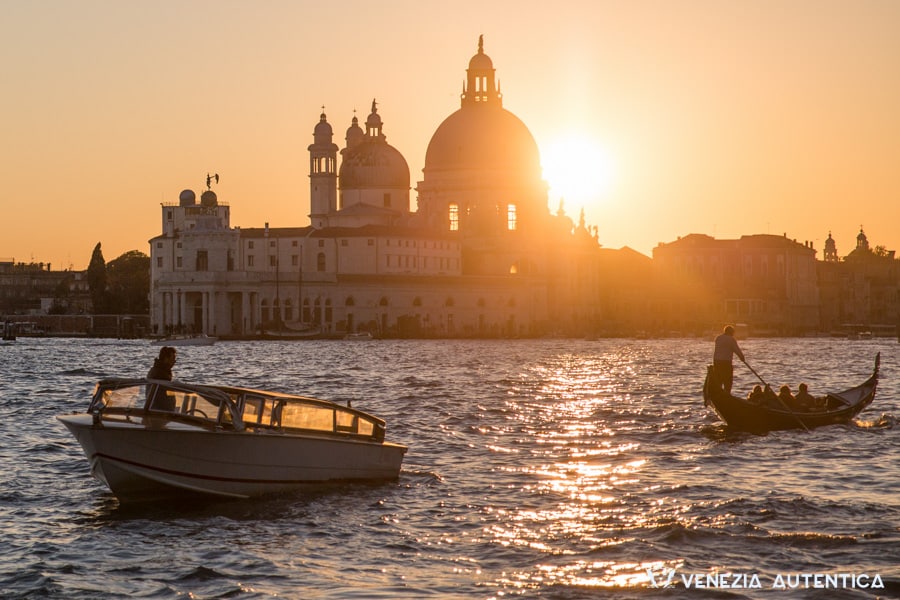
While taxi drivers might be perceived as expensive by a broad audience, their price has been established together with the city and it is fixed for certain routes, usually between 80€ and 110€ in daytime .
Fake drivers , on the other hand, won’t tell you any price and will, illegally, get you on board. Only at a later stage they might tell you their staggering high personally-made-up-cost for the ride and force you to pay.
Keep your eyes open! You really don’t want to be in a boat with someone forcing you to pay 300€.

Book an authentic experience in Venice
If it has a man hailing people on the street and an outdoor menu with flags and translations, which might even been called a 'tourist menu', then it is a restaurant you might want to avoid....
If you’re urged into a restaurant by an “Italian looking” person, who calls after passers-by and invites them to check out their “Italian food” menu… RUN!
While high prices are not always a guarantee for quality, a “tourist menu” is almost certainly a guarantee for some underwhelming frozen food experience.
For Italian standards, Venice is an expensive city, and so is the food, even in the supermarkets. It is by no means possible to offer a full menu with fresh ingredients at 10 or 12 euros.
Masks costing less than 20 euros can't be made in Venice. Chances are you're looking at made in China masks, a threat to your Health.
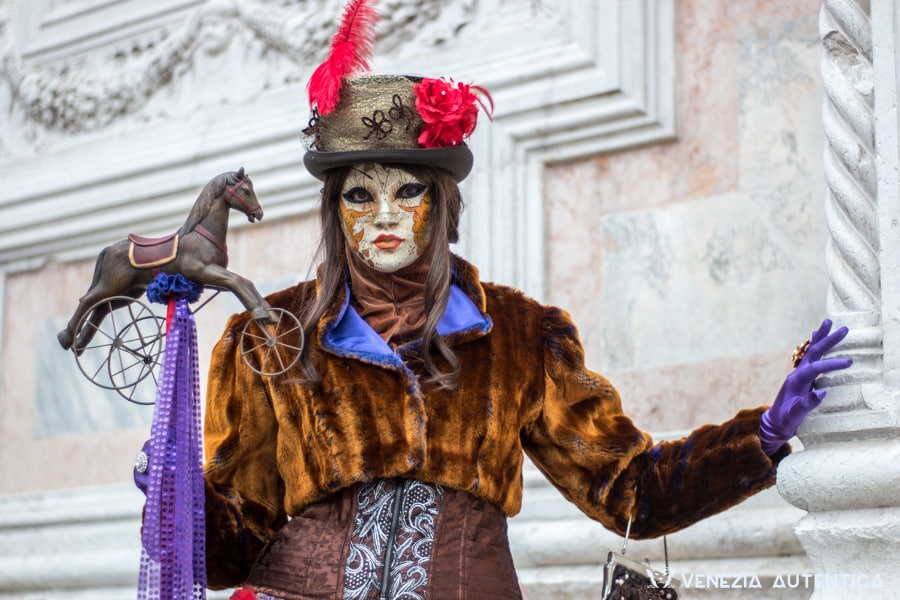
In the past 10 years, Venice has been flooded with cheap , made-in-Asia, mass-produced souvenirs shops that have replaced shops essential for the life in Venice, and have made the life of genuine artisans much harder.
Besides the social and economic consequences Venetians are facing, there is a something else at threat: “just” your Health .
Among the extremely cheap souvenirs that can be found all over the city, there are clearly also masks.
These masks do not comply with EU legislations regulating the colors and substances allowed for wearable products: the contact between these masks and your skin is potentially dangerous and harmful for your health. Why on earth do vendors get permission to sell them?
In Italian we say that once a law is written, a loophole is found: these masks are allowed to be sold “ for decorative use only “, and are labeled as such.
These labels, however, are extremely small, “tend to fall off”, and those salesmen somehow tend to forget to tell you about them…

We personally have and wear a few masks each, and our skin is in perfect health. We let you guess if we got ours from an artisan or if we picked the “for decorative use only” ones…
The picture above shows a genuine and beautiful handmade mask.
There are no real beggars in the street of Venice. Don't fall for this organised extorsion.
It saddens and frustrates every Venetian when we see generous and good-hearted visitor giving money to beggars . “What?! Why?!”, you may wonder.
Venice is a small pedestrian city, and inhabitants and workers tend to know each other’s faces. Among those faces we learned to recognize, there are also those of said beggars who fake disabilities and terrible diseases.
These well-organized healthy people and their cunning faces can be seen reaching early in the morning from the mainland, all straight and in full health , and getting ready to mischief the good-hearted people who think they’re helping someone in need.
Money given to these people is money given to criminal organizations .
Like in every other city, there are homeless people in Venice, some of them being very well known and loved by every one of us.
These people are given food and some help by the inhabitants themselves, receive free assistance from the State , and are followed by amazing volunteers that offer love and help to those in need.
These people do not stay in the most crowded area nor would they call after you asking for money.

Unlock a discount at the best local businesses in Venice
If you see people wearing costumes asking for money around venice, they are not legit and they might even blackmail you..
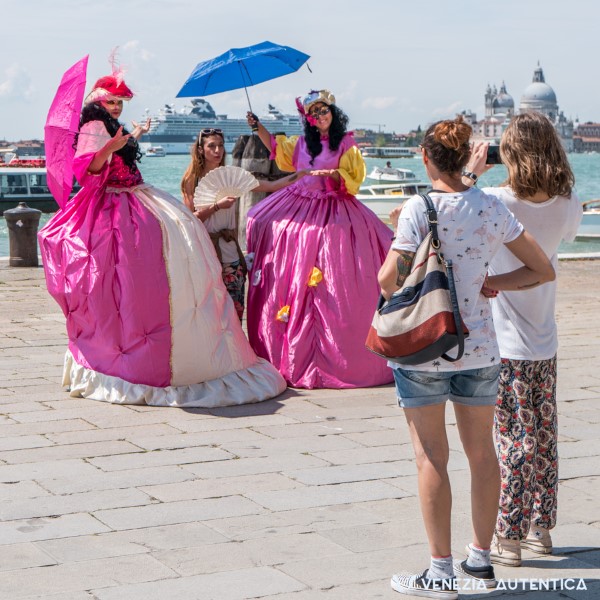
A new illegal trend that started back in 2014, consists of people standing in busy areas wearing horrible plastic costumes and makeup, inviting you smiling to take a picture with them .
Besides the fact that it is an illegal activity since those people don’t have any authorization, there is more to it. Once you will have taken a picture with them, they will insist on being paid up to 10€ and go as far as taking the phone/camera off your hands and not return it until they will receive a payment.
Such a scenario can happen as well when in Saint Mark: an illegal seller will offer to take a picture of you in front of the Basilica, and then ask for money to return your gear.
In case you couldn’t tell, we hate these behaviors!
Want more tips, tools and stories from Venice, Italy?
We're on a mission to make it easy and fun to discover and support the authentic Venice. Try our email and see for yourself!
Thanks for signing up! If there is no e-mail in your inbox in the next hour, remember to check your spam folder and to add us to your contact list. Thank you! Get access to our live videos and even more content: like us on Facebook to add daily goodness to your feed. A presto!
Oops! We're sorry, something went wrong. We'll fix it soon. In the mean time, you can like us on Facebook to stay in touch!
By signing up you agree with Venezia Autentica's privacy policy
Mind your belongings in crowded places. Pickpocketing is rare but it happens.
Even though it is a not a common problem, for good measure we suggest you pay attention to your belongings especially when in very (over)crowded places as on water buses, San Marco square, and the Rialto bridge. Thousands of people in a very small place create confusion and make an easy target for pickpockets .
In case you're tempted, do not buy from street vendors. You could get in big trouble.
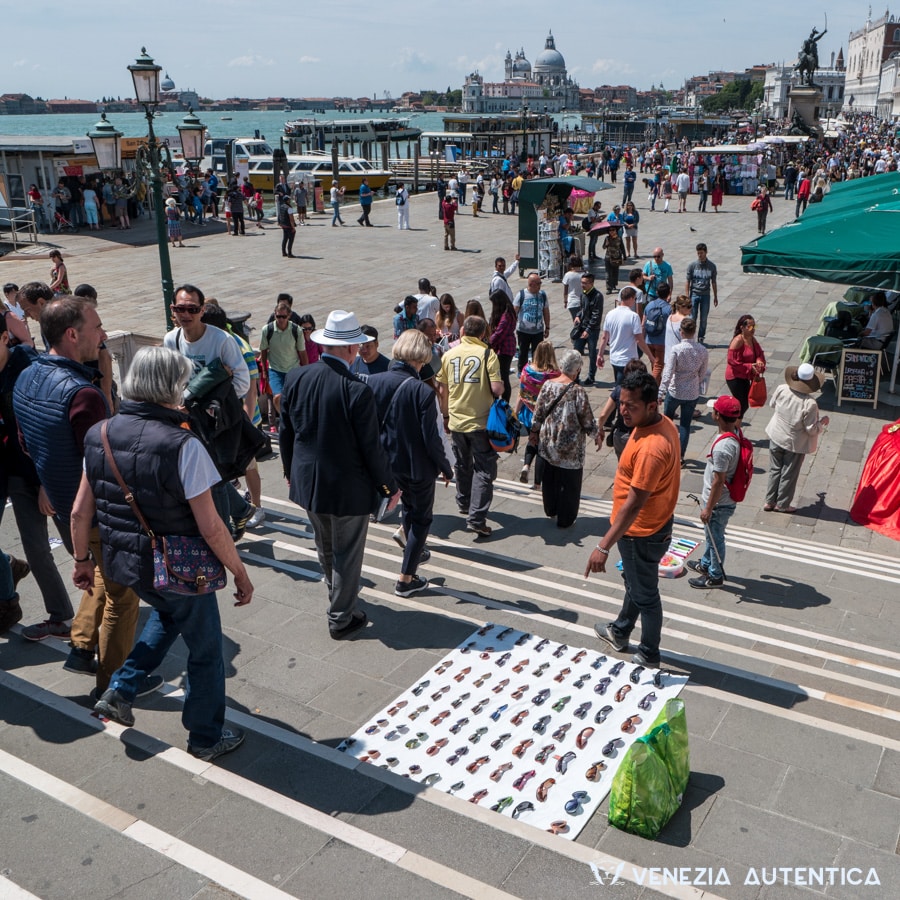
Do absolutely not buy products from illegal vendors on the streets . Not only does it nourish the illegal market, but it can also lead you into big troubles: for example, if you buy counterfeit goods such as bags, glasses, etc you could be fined for up to 7.000€.
Avoid taking or giving anything to people in the street. They will hussle you to pay for this rose, gadget or service you didn't want.
If it hasn’t already happened to you, it’s bound to happen, especially in an area such at St Mark’s square.
When strolling around Venice minding your own business, you will see people walking in your directions to then try to literally force into your hands the rose or gadget they are trying to sell.
Do not take it, not even for a moment, or they will chase you until you pay them for what they initially gave you “for free”.
Oh and never never step on the Infamous Green Step
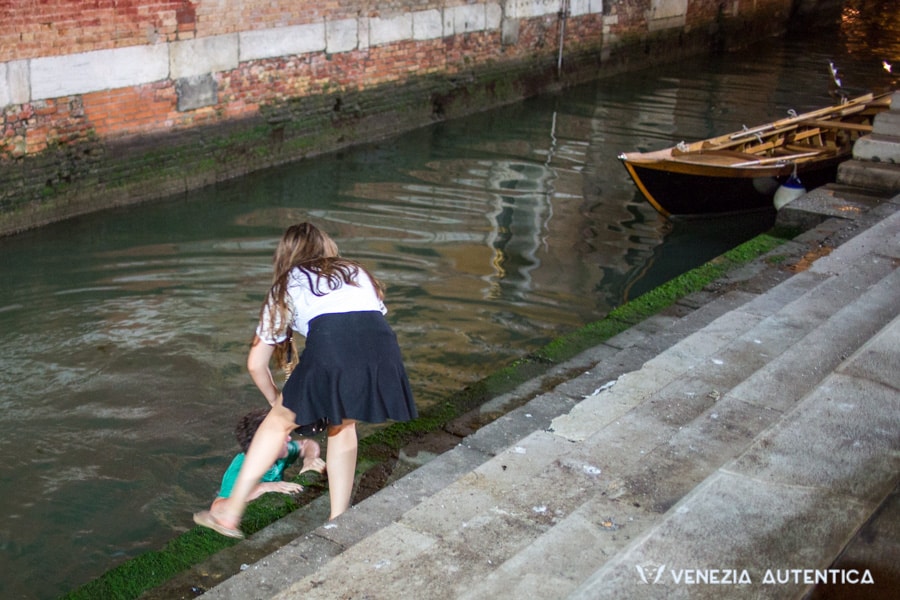
What’s that?? Every local has seen dozen of visitors stepping on it and… flying straight into the canal !
All over the streets of the city, there are steps that were built to give access to the canals, providing an easy way to step on the boats.
Over the centuries, however, the levels of the seas have increased and the lowest steps are now covered by water for many hours per day, and therefore covered by green algae .
High and low tide alternate every 6 hours, leading those steps to be exposed for some hours every day.
During those hours, many people are lured into stepping on them to take some beautiful pictures from an interesting angle, but the moment they place their foot on that slippery ground , they end falling straight into the canal.
The water is not cold, nor are there strong streams, but houses in Venice have been flushing their toilets for centuries straight into the canals, and some still do … we guess we need to tell you no further!
Now you know what to look out for when visiting Venice. To best plan your next visit, however, make sure to check out also the following resources to make the best out of your stay while making a positive impact on the local:
I'm visiting Venice. Why should I follow your recommendations?
The way you visit Venice has an impact both on the quality of your experience and on Venice itself. Chilling, exploring , shopping , eating and drinking where the locals do, can make a huge impact both on the memories you bring home and on the local economy and community.
POPULAR POSTS LIKE THIS
- The quick guide about eating in Venice, Italy, that you will be glad you read
- Everything you ever wanted know about authentic venetian food
Liked this article? Don’t forget to share the love!
Home >> Visiting Venice >> Tips and Inspiration >> You’re Here
Tips and Inspiration to experience Venice
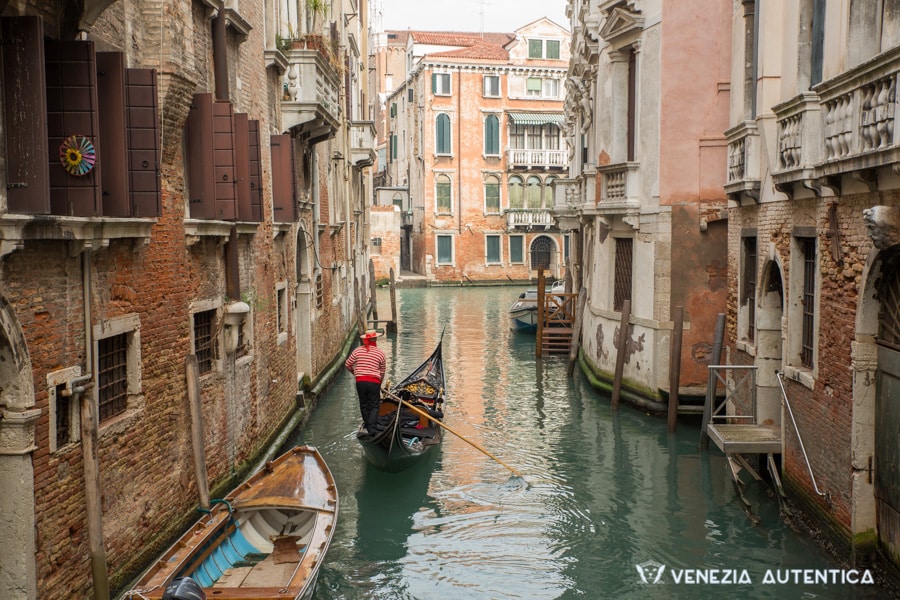
Want to go on a gondola ride in Venice? Here’s everything you need to know!
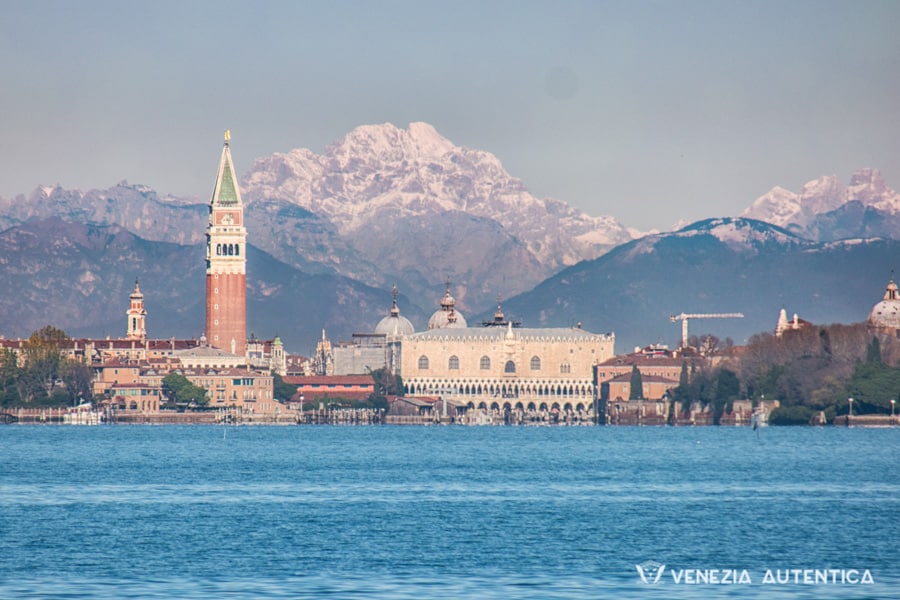
How’s the weather in Venice, Italy? We’ve got you covered!
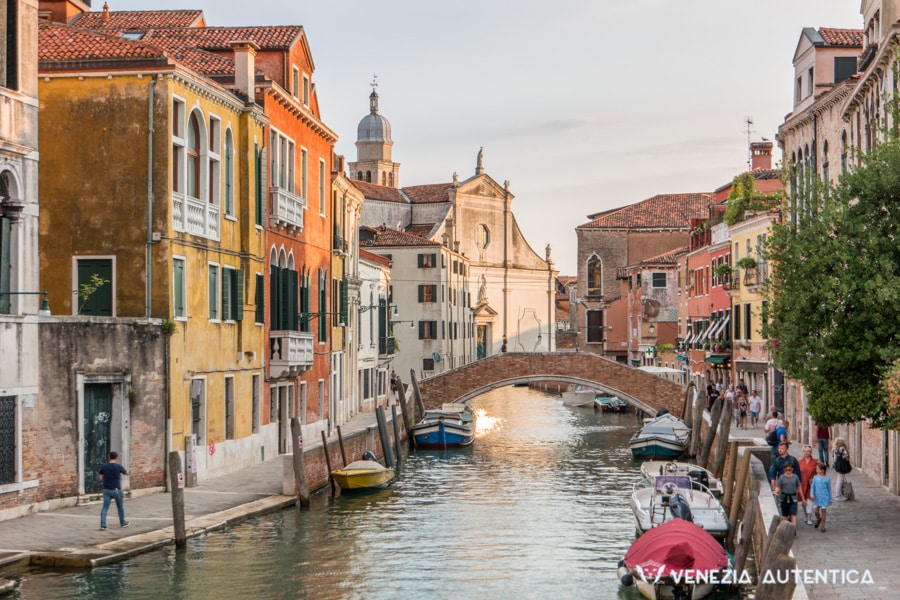
The ultimate guide to the top 10 things to do and see in Venice, Italy
More in Visiting Venice
Go to Visiting Venice >>
- February 12, 2022
You might also like
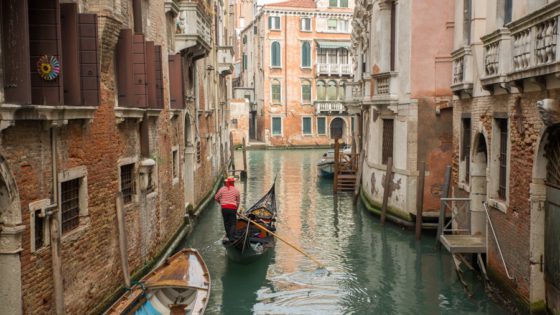
Want to go on a gondola ride in Venice? Here’s everything you need to know!
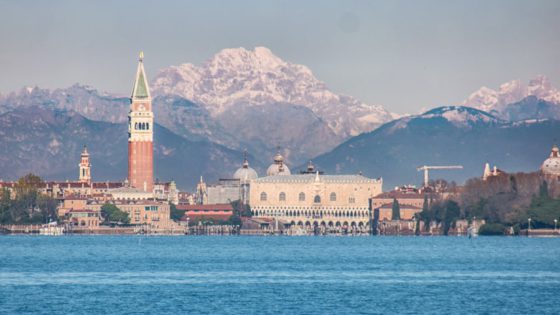
How’s the weather in Venice, Italy? We’ve got you covered!

- ONLY PRIVATE TOURS AND ACTIVITIES
We make it easy to experience Venice with local guides and experts
- 100% GUARANTEED LOCAL AND IMPACTFUL
Looking for things to do in Venice? Experience Venice with a local!
We’d love to chat.
Let us know
how we can help

- Sailing Updates 0
- [email protected]
- +385 52 422 896
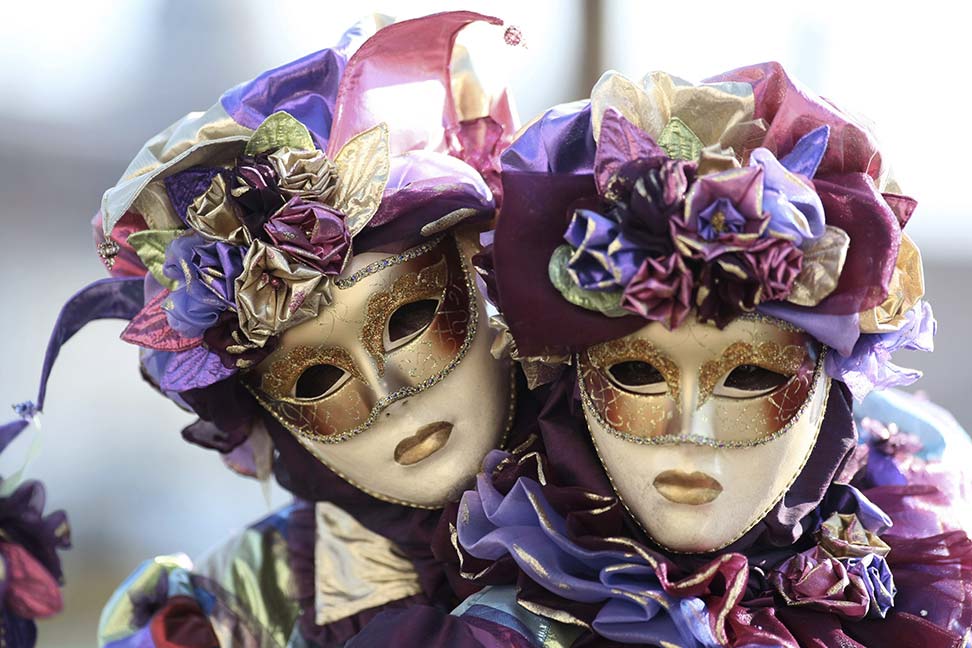
Venice unveiled: how to avoid common tourist traps
Venice , with its bewitching canals and historical charm , captivates millions of people every year. While the city’s beauty remains undeniable, its growing popularity has given rise to numerous tourist pitfalls. But fear not, this guide will reveal the secrets to experiencing the authentic charm of Venice, steering clear of the typical tourist traps.
Venice is one of the most beautiful city in the world, so it’s little wonder that tourists flock there to experience it for themselves. But what are the biggest tourist traps in Venice and how can you avoid getting caught in them?
Fake Masks and Murano Glass: Deciphering Authentic Souvenirs
A colourful Venetian carnival mask can make the perfect souvenir to take home from Venice, but not all masks are created equal . The cheaper ones (20 Euros or less) are most likely made in China and not in Venice . They won’t necessarily comply with EU safety regulations, which means that they can contain harmful substances that could cause skin irritation. They’re meant to be labelled as ‘for decorative use only’, but many are not. Just remember: you get what you pay for .

Another popular Venetian souvenir is Murano glass , made across the lagoon on Murano Island . To make sure you’re getting a real bargain, buy Murano glass souvenirs on Murano Island itself:it’s cheaper, more likely to be authentic, and a great opportunity to visit another part of the lagoon.
Tourist Menus: Navigating the Gastronomic Scene
As tempting as it may seem to choose a restaurant in Venice where there are photographs of the food and there’s a friendly face outside trying to entice you in , these kinds of restaurants are best avoided. Steer well clear of restaurants that advertise “tourist menus”: these are classic tourist traps in Venice and you will almost certainly get low-quality (even frozen) food at sky-high prices.
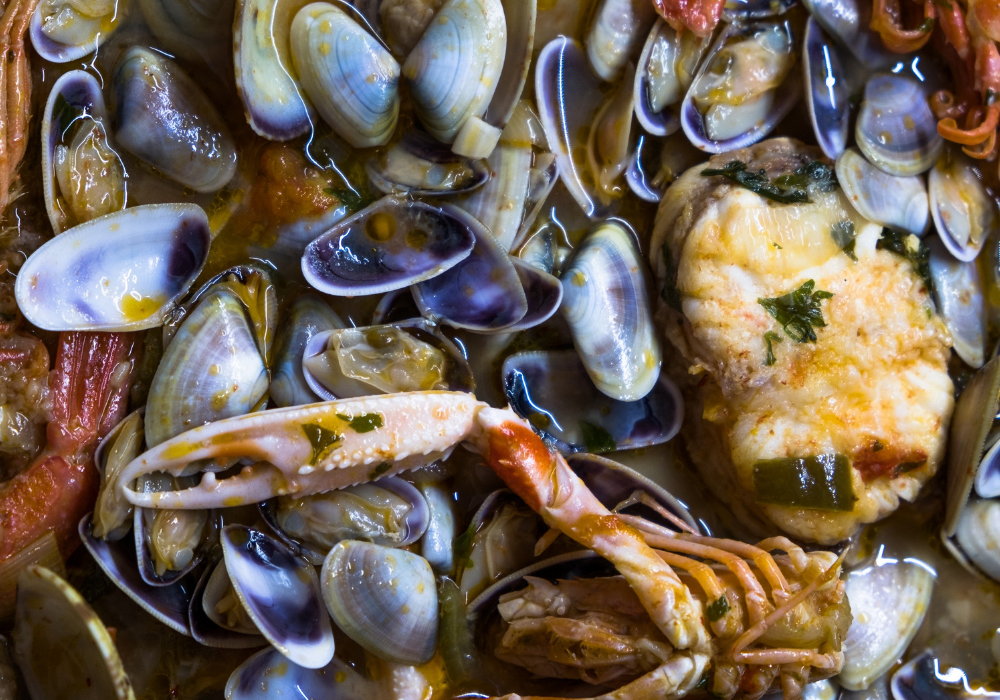
Street Vendors: Beware of Fakes
Like many European cities, Venice has its fair share of illegal street vendors selling counterfeit designer products , such as handbags and sunglasses. Whatever you do, don’t fall for it ; quite apart from the poor quality of these goods, you could face a substantial fine if you’re caught buying them.
Gondola Rides: Romancing the Canals
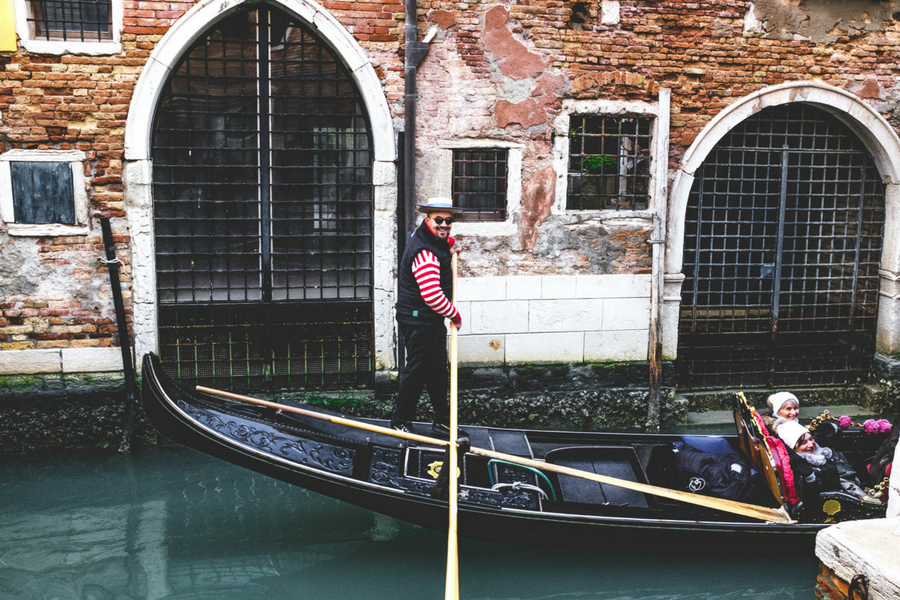
A gondola ride is one of the most romantic things to do in Venice , but it’s easy to fall prey to the exorbitant prices. Rather than getting into the first gondola you see, why not arrange a gondola ride using our trusted partner? Before you leave, don’t forget to brush up on some fascinating facts about gondolas to share with your travelling companions!
Whether it is a week-long visit or a day trip to Venice , another way to avoid tourist traps is by heading to a quieter part of the city . If you want to escape the crowds, why not head to the lesser-known Cannaregio district ? Here’s what to do in Cannaregio to get your itinerary started!
How Do You Spot a Tourist Trap in Italy?
Travelling in Italy offers a rich tapestry of cultural experiences , and Venice stands out as a crown jewel. However, like many popular destinations, it’s not immune to tourist traps. Recognising a trap often comes down to a few key indicators:
1. Over-promotion : If something is overly advertised, especially in several languages and with high-pressure sales tactics, it’s likely catering primarily to tourists.
2. Standardized Prices : Real local establishments have variable prices, whereas tourist traps often have standardized, round-number pricing.
3. Location : Establishments located near major tourist attractions tend to be more commercial. Venturing a few streets away can lead to more authentic experiences.
4. Reviews : Modern travellers have the advantage of online reviews. If an establishment has a high number of reviews in languages from far-off countries may cater mainly to tourists.
If one is aware and does a little research in advance, visitors can savour the authentic Italian experience while avoiding the most common pitfalls.
If you’re exploring Venice, whether for a week or a day , avoid the tourist crowds by venturing into Cannaregio. This serene district showcases authentic Venice. For the best travel experience, rely on Venezia Lines to guide you through your journey, letting you uncover the city’s authentic charm !
Related posts
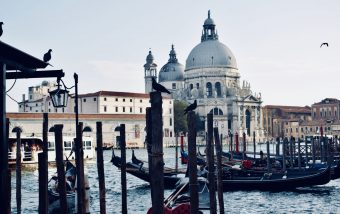
Here’s why you should plan a Venice honeymoon
Celebrated as one of the most romantic honeymoon spots in Europe, if not the world, Venice – the City of Love – makes the perfect place to stay on your […]
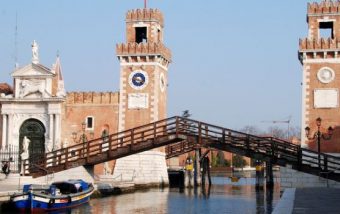
Castello: what to do in the Venice least known district
The district of Venice Castello may not be the city’s best-known area (sestiere), but it is the largest, and there’s plenty here to make it worth a visit. Even better, […]
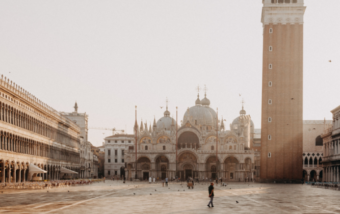
What to see
One day in Venice: what to see
Thanks to our Venice day trip it’s easily possible to experience the magic of this incredible city in just a day. But what are the top things to see and […]
Tourist Traps To Skip In Italy (And Where To Go Instead)
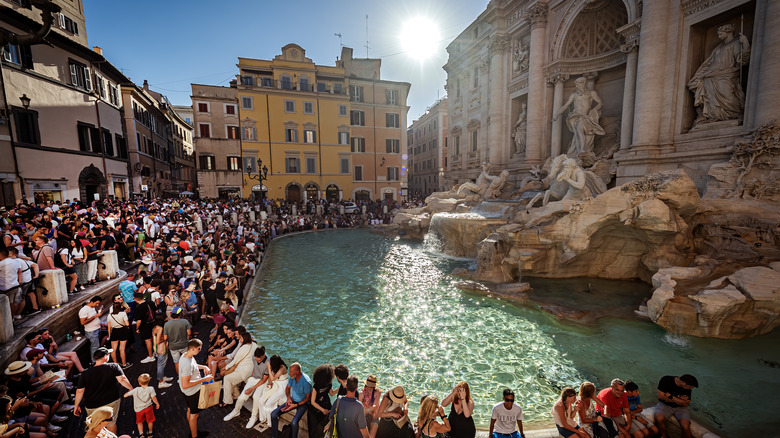
Italy numbers among the most visited countries in the world. Almost 80 million tourists travel there yearly (per Statista ), and you can hardly blame them. The country offers fantastic food, cities of sublime beauty, marvelous beaches, fairytale-like islands, and the wonders of the ancient world. However, tourist traps will also abound when a destination reaches this level of popularity. Rome, Naples, Amalfi Coast, Cinque Terre, and Venice all regularly make headlines for overpriced food, rude staff in supposedly "authentic" restaurants, taxi and tour scams, and souvenir rip-offs. But the beauty of Italy is that you always have a better alternative.
So, how do you dodge the destinations, activities, restaurants, and shops with "tourist trap" written all over them? We've used our vast experience visiting Italy and combined it with the know-how from other travelers to answer that question. We've also taken into account Tripadvisor, Google reviews, and travel reporting from leading media outlets like The New York Times, The Guardian, and BBC. You should be able to enjoy being in a magical place like Italy without worrying about losing money and patience on rip-offs.
Skip the tourist traps of St. Mark's Square in Venice and go to the authentic cafes in the Dorsoduro university district instead
St. Mark's Square (pictured) is the epitome of Venetian splendor. The Byzantine architecture of Basilica impresses with golden grandeur, the silhouette of the 16th-century Campanile is as iconic as attractions get, and the arcades of Doge's Palace are an ultimate visual moment. That's the kind of scenery you want to enjoy with a cup of coffee sitting on one of the terraces that dot St. Mark's Square. Please don't do it; it's among the classic Venetian tourist traps. Google Maps is filled with angry reviews of the square's cafes. 11€ for a cappuccino at Aurora, 30€ for a bottle of water, and two Coca-Colas in Le Boulevard, and (are you ready?) €17 for an orange juice at Caffè Florian.
Skip St. Mark's Square cafes, for mercy's sake; there are better sestieri (local neighborhoods) where you can enjoy terrace life in Venice. Dorsoduro is one of them. Located in the city's south and encompassing the island of Giudecca, it's a less-crowded, more hip university district where you find regular prices and authentic Venetian cafes and eateries. Osteria Ai Pugni specializes in typical local snacks and offers splendid canal views, Campo Santa Margherita is a quaint square with colorful houses and cozy terraces, and Osteria Al Squero is a cicchetti (traditional Venetian small bites) go-to spot.
Explore Fontana dell'Acqua Paola instead of the Trevi Fountain in Rome
The Baroque 86-foot glory of Trevi Fountain is where Rome's grande belleza (the great beauty) lives. Unfortunately, this gorgeous structure also symbolizes overtourism. Come here during the day, and you'll be lost in the crowds that quickly fill up the narrow Piazza di Trevi in front of the fountain. Apart from selfie-taking tourists, expect annoying street sellers, a higher risk of pickpocketing, and rip-off restaurants and cafes in the vicinity. In other words, it's a lot to handle.
Fontana dell'Acqua Paola (pictured) is an alternative that's 150 years older than Trevi. Set on the Janiculum Hill near the Botanical Garden and Church of San Pietro in Montorio, it's a sublime white marble-clad sight with a vista over the Eternal City as a bonus. Remoteness from the buzzy city center and picturesque surroundings make Fontana dell'Acqua Paola a charming and peaceful visit and a perfect change from the chaotic Trevi experience. Also, you might recognize the structure from the opening scene of Paolo Sorrentino's "The Great Beauty" film.
Instead of the influencer-filled Lago di Braies, go to Lago di Carezza or Lago di Dobbiaco in the Italian Dolomites
Lago di Braies may be one of Europe's most beautiful lakes. It also suffers badly from overtourism that threatens its fragile ecosystem. The lake is crowded, and there's also restricted personal car access from July 10 through September 10. Moreover, the closest parking lot to the lake would cost you €38, and you'll likely find yourself in a traffic jam upon approaching the lake. That's the price you have to pay for being Instagrammable. Then, when you're on the lake, expect hoards of influencers fighting for the best selfie spots and queues for €50 boat rides.
For a much easier and stress-free experience, check out other lakes with the same killer views but fewer crowds and restrictions. Lago di Carrezza (pictured), with an awe-inspiring reflection of the Latemar mountain range, is a natural marvel located right next to the main road. Parking would cost you only €2. Lago di Dobbiaco, with fjord-like mountain vistas, is another roadside hit with easy parking and magnificent views of the Dolomites.
Instead of going to overcrowded Pompeii, discover the Valley of Temples in Sicily
Pompeii is among the most unique archeological sites in the world. As an ancient Roman city devoured by the lava of Vesuvius volcano and excavated to a fraction of the glory of its yesteryears, it's an enticing visit and an Italian must. But with mega popularity comes the tourist trap mentality. You'll encounter scammy fake information points, rip-off taxis from Naples, costumed "Romans" posing for photos and demanding money, and crowds everywhere you go. Visiting in the summer, especially, may be quite a challenge to endure.
While you shouldn't necessarily skip Pompeii, you may want to consider the alternatives, such as the spectacular Valley of Temples (pictured) in Sicily. One of the best sites to visit in Italy for history buffs , it's a UNESCO-protected complex of ancient Greek temples near Agrigento. Think Acropolis in Athens but transported into the hilly landscapes of the largest Meditteranean island and multiplied. It's undoubtedly one of the most beguiling European Greek sites and an underrated attraction. A whopping 1,300 hectares of area gives you plenty of room to breathe and ensures that you don't feel the presence of fellow tourists even during the peak summer months.
Instead of the Blue Grotto in Capri, go to the Bue Marino Caves in Sardinia
Blue Grotto on Capri is a sight to behold and one of the most beautiful sea caves in the world . Visitors enter through the narrow portal to discover the mesmerizing and otherworldly azure glow that awaits inside. But then you've got to consider that the boat won't spend more than 5 minutes in the cave, dips in the water are out of the question, and the entrance fee is €18. Moreover, you will queue to board the rowboat, and the whole tour will be rushed, uncomfortable, and soulless. Unfortunately, all of that qualifies as a tourist trap, and from June to August, coming to the Blue Grotto is a stressful affair.
Turn your attention to Sardinia for lesser-known but equally stunning cave adventures. Located among the splendid coastal beauty of the Gulf of Orosei, the Bue Marino Caves (pictured) are a great alternative to Blue Grotto. They offer dramatic turquoise sea vistas, a one-hour guided tour inside the stalactites-filled subterranean heart, and scenic boat rides along the stunning Sardinian coast.
Instead of visiting touristy restaurants near major Roman attractions, go to Trastevere for authentic local fare
One of the golden rules of not getting ripped off in a restaurant in Italy is avoiding places that overlook iconic Roman monuments. The press is filled with stories of tourists paying more than €100 for a lunch near St. Paul's Basilica or two orders of spaghetti costing €430 near Castel Sant'Angelo. You don't want to spend a fortune on a scammy restaurant falling for one of Italy's most well-known tourist traps. The best way to avoid such a fate is to get away from the major tourist areas like the Colosseum, Trevi Fountain, Piazza Navona, or Vatican City and head to the more authentic and better-priced neighborhoods.
You should dine in Trastevere to eat like a local . You may know the name from the recently released song by Italian Eurovision winner Måneskin. It is a former working-class district full of medieval architecture and atmospheric cobblestone streets bordered by the scenic River Tiber. Locals, ex-pats, and tourists mingle there, dining in cozy Roman trattorias, enjoying the terraces of hip cafes, and sipping locally-produced wine in the hole-in-the-wall bars. It's the ultimate place to encounter the real Rome and pay the normal price for mouthwatering food and drinks.
Calabrian coast instead of Amalfi
Oh, wonderful Amalfi. Cliffside towns overlook the blueness of the Tyrrhenian Sea, chic terraces of restaurants with extra-photogenic backgrounds await couples, and beaches lure with fashionable bars. However, the idyll is broken the moment you encounter endless traffic jams on crammed narrow roads, see the sky-high prices in local eateries that lost authenticity years ago, and book your accommodation paying more than you should. Yes, this part of Italy is irresistible. But hoards of tourists have changed the marvelous landscape into a playground for Instagram with a hefty price tag. In summer, the Amalfi Coast reaches the peak of its capability to accommodate thousands of visitors. You want to head elsewhere to spend your money better.
The underrated Calabrian coast is the answer. It's all cliffs, historic villages, and glamorous beaches, too, without overcrowding and rip-offs. It's that Italy everyone seeks in Amalfi: simple, accessible, a bit unorganized, but incredibly charming in the end. Start at the stunning town of Pizzo Calabro, proceed to the dramatic cliffside Tropea (pictured) with spectacular Rotonda Beach, explore the endless blue beaches of Capo Vaticano, and head all the way down to picturesque Scilla, which is among the most beautiful villages in Italy.
Take a traghetto instead of the gondola in Venice
To gondola or not to gondola, that's the pressing question for every Venice visit. Let's stop for a moment and think about what you're really getting by paying about €90 for a 30-minute ride. Yes, the vista of palazzos from the canals is undeniably charming, but it's also the same view you can get from any other means of transport in the city. Sure, the serenading of the gondolier is special, but he does that for everyone else. Finally, you can get stuck in a "canal jam" with other gondolas lining up to proceed through narrow water passages, and it's far from a comfortable experience.
Why would you pay €90 for a gondola if you can pay €2 for a traghetto? The latter is a shared wooden boat, another typical Venetian way to move around from one side of the Grand Canal to the other. It's much shorter, with no singing involved, but it boasts the same level of authenticity as the gondola. And then you can always complement your waterborne experience by buying a Venezia Daily Pass for €25 that will allow you to board as many vaporetti (Venetian larger public transport boats) as you want, and go to other islands of the Venetian lagoon, such as Burano and Murano.
Instead of buying tacky souvenirs near the famous monuments, look for local artisans
Not everyone enjoys souvenirs; the best memories are those you carry inside. But if you still want to bring something home, getting ripped off in Italy is very easy. After all, it's the country of the Pisa Tower and the Colosseum; how can you resist having a mini version of a famous monument proudly hanging on your fridge? While the smaller souvenirs won't usually do any harm to your budget (although, don't spend more than €10 on a magnet), it's the seemingly authentic symbols of regions (think limoncello in Sorrento, carnival masks in Venice, glass in Murano, high-fashion brands in Milan) you're visiting that can get you scammed.
Two main rules are avoiding street vendors at all costs and doing your research beforehand. Italy is a country of artisans, centuries-old traditions, and some of the best food products on Earth. Don't fall for flashy sales tactics, avoid overly touristy showrooms promising the "most Italian" experience, and always go local. For artisans, use Homo Faber Guide to locate the ateliers and galleries. For fashion, only go to the official boutiques and avoid resellers; for food souvenirs, opt for locally-owned stores specializing in regional produce.
Dine in Navigli instead of the Duomo area in Milan
When it comes to tourist traps in Milan, everything is pretty straightforward. The main scammy "action" is focused on a small area around the splendid spired Duomo and frequently Instagrammed Galleria Vittorio Emanuele II shopping arcade. Long story short, if you decide to have a drink or dine with a view here, you're guaranteed to pay double or triple the price of the city's standard. Moreover, there's a risk of pickpocketing, omnipresent street vendors will spoil your day, and crowds of fellow tourists will try to strike the best pose with doves and the cathedral. Have a stroll there, get to the top of Duomo for the views, and take a pic or two inside the elegant 19th-century-built gallery. Then, go to more wallet-friendly and authentic parts of the city.
Check out Navigli (pictured), one of Milan's most charming, easygoing, and pleasant neighborhoods. Five canals form this quaint part of the city known for joi-de-vivre and a diverse choice of bars, cafes, street food joints, and elegant osterias. You will feel the beat of actual Milan, the one that's defined by locals and not by tourist-focused, overpriced restaurants and scammy street vendors.
Instead of Cinque Terre, go to Sestri Levante
Cinque Terre is one of a kind. The beauty of these five UNESCO-protected villages is unrivaled, the epicness of the craggy Ligurian coastline is absolute, and you will find some of the most picturesque vistas on the planet. But such splendor has a cost, and overtourism is its name. Sadly, the warm months turn this fragile, sublime area into a noisy, Disneyland-like location packed with often poorly behaved visitors competing for selfie space on narrow coastal hiking trails. Of course, you can't blame people for wanting to touch the beauty, but tourist trap restaurants and high prices come with "Instragrammization."
If you want to avoid that, spend your money more wisely, and still get a glimpse of that elusive Ligurian magnificence, head to Sestri Levante (pictured) and its Riviera. Comfortably located between Genoa and Cinque Terre, it's a land of colored villages, scenic beaches, and inspired cliffside coastal panoramas — just without the frenzy and with underrated charms. During the summer, it's a perfect alternative to crowded Cinque Terre. You can visit both in winter and early spring with peace of mind.
Choose Ischia over Capri
Hardly any other island in Italy is as cinematic as Capri. But with only 4 square miles of size and 2 million visitors per year, it can get really crowded. Then, an air of exclusivity helps high-end resorts and upmarket restaurants draw celebrities and wealthy folk to the island's dramatic shores. The same atmosphere of upscaleness nurtures the tourist trap restaurants in Marina Grande and Capri towns and makes visiting the island feel like a heavy burden on your wallet. While the mythical beauty of Capri is most certainly justified, the prices can reach outrageous heights.
But there's always an alternative. Ischia, a fellow wellness-focused island in the Bay of Naples , stands as a less touristy, better-priced destination with comparable postcard-perfect vistas. It's almost 18 square miles, has more space, offers more accommodation options, and boasts an underdog allure. The volcanic origins bring unique mountainous landscapes and bigger scale gifts with a variety of beaches to enjoy.
Beware of the tourist trap restaurants and choose eateries that serve regional food instead
Tourist trap restaurants have found fertile ground in Italy. The basics of detecting one are pretty simple. Never opt for an eatery right next to a famous attraction. Be it the Colosseum, Duomo, St. Mark's Square, or Vatican City, you will regret your decision to settle for an alluring terrace "with a view." The regret will materialize in an unpleasant check with seemingly unbelievable rip-off prices. Flashy images in the menus outside the venue, overly friendly promoters that fight for your attention, kitschy terraces, and interiors that scream "authentic Italian" are some of the sure signs you're dealing with a tourist trap.
While pizza and pasta are beloved staples of Italian cuisine, this country is all about regional traditions. For example, pizza Margherita may be a dominant food in Naples, but it is not that common in, say, Genoa, where focaccia reigns supreme. Do your research on the region you're visiting, know what it's eating, and look for eateries that serve that. Avoid uber-central areas and go to the quaint outer neighborhoods. And always trust your gut; if the restaurant seems sketchy, it probably isn't worth your money.
Head to San Miniato al Monte instead of Piazzale Michelangelo in Florence
On one hand, you can't beat the panorama of Florence from Piazzale Michelangelo. On the other hand, the place is among the tourist traps in Italy you need to avoid . During the high season, this neoclassical square-turned-parking-lot becomes a poster child for overtourism with an abundance of street vendors, pickpockets, and excessive prices at the questionably named Vip's Bar on-site. Still, this place is one of the best viewpoints in Florence, and you would miss out on not coming there to contemplate and shoot pictures.
You should also know that a much more rewarding viewpoint awaits you 6 minutes away on foot. We're talking about the Romanesque jewel San Miniato al Monte Basilica. A Florence Duomo-reminiscent white marble facade greets you there, tranquility abounds at the Porte Sante cemetery, and magical views of the city unfold. You'll be even higher above Florence than Piazzale Michelangelo, so the iconic panorama of this Tuscan gem is all yours to enjoy—minus crowds, annoying vendors, and overpriced restaurants.

Eat Like A Local In Venice: 5 Places Without Tourist Traps
One of most common things that will happen when you are travelling is that you end up in a ridiculously expensive restaurant after being ushered in by an overly enthusiastic waiter. Experienced travelers will tell you to avoid such tourist traps with menus that are in more than 3 languages and with blatant picture displays. But where do you find best non touristy places to eat like a true Venice local?
While some of the Venetian restaurants might have accumulated a bad reputation for themselves as having exorbitant prices, we want to introduce to you some of the places where locals eat to get a taste of good, authentic local food without burning a hole in your pocket (or falling into a tourist trap!).
1. Trattoria Alla Rampa
Castello, 1135, 30122 Venezia VE, Italy (Via Garibaldi)
Telephone: +39 041 528 5365
Lunch only, closed on Sunday
Located in a working-class neighbourhood, Trattoria Alla Rampa is a popular lunch spot for the residents who live in this neighborhood. Their wallet-friendly “worker’s menu”, which consists of pasta, main course, wine and coffee, is excellent value for €13. And it probably explains why they are always packed with locals for lunch. At 1pm, the menu switches to offering home-styled Venetian dishes. Dishes can include veal scaloppini (similar to a veal cutlet), risi e bisi (Venetian rice and peas) and squid ink pasta. Pasta costs €10 and main dishes around €14.
2. Venetian fish cooked by a true Venice seaman, Massimo

The reviews on his page to book speak for themselves and you cannot get more local than enjoy a freshly cooked fish in a Venetian’s own home. Venice’s widely popular home-chef and seaman Massimo offers the freshest seafood cuisine and guarantees a taste of the 7 seas with his meal in an ancient home in central Venice. Feel free to check him out here .
3.Osteria Al Portego

Castello San Lio, 6014, 30122 Venezia, Italy
+39 041 522 9038
When you are in venice, you definitely need to try out their cichetti, which are small snacks or side dishes typically served in bacari or also know as cichetti bars in Venice. Osteria Al Portego has a wide selection of cichetti such as fried stuffed zucchini flowers and bread with baccalà (dried salted cod). If you are in for a drink, join them for their happy hour and choose from their large selection of wines.
4. Ristorante Dalla Marisa
Cannaregio, 652, 30171 Venezia, Italy
+39 041 720211
Given its appearance, this restaurant might not attract your attention but it sure did catch the eyes of editors at Jamie Oliver’s travel magazine. This intimate, cozy restaurant does not have an a la carte menu but instead offer dishes that change daily, depending on what ingredients are available. If you are up for good seafood and would happily go where locals would go, then you are at the right place.
5. Osteria da Alberto
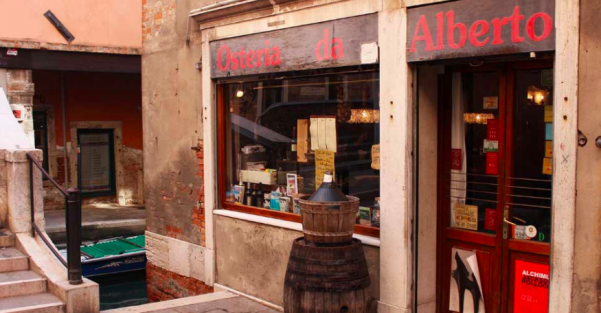
Calle Giacinto Gallina – Cannaregio, 5401, 30121 Venezia, Italy +39 041 523 8153
Located between Campo San Giovanni e Paolo and the Santa Maria dei Miracoli, Osteria da Alberto is a local’s favourite, especially around lunchtime. They serve authentic and classic Venetian cuisines such as risotto and spaghetti with squid ink. Their daily specials menu is ever changing based on the season and what the chef can find in the local seafood market, so you can be sure that everything is fresh. Go in, grab a table and let them surprise you.
Image credits: 1 | 2 | 3 | 4 | 5
Taste the World
Discover amazing food experiences.
You Might Also Like:
Venice, Italy: How to Avoid the Tourist and Budget Traps
Updated : August 1, 2023
- Share on Facebook Facebook
- Share on Twitter Twitter
- Share on Pinterest Pinterest
- Share on WhatsApp WhatsApp
- Share via Email Email
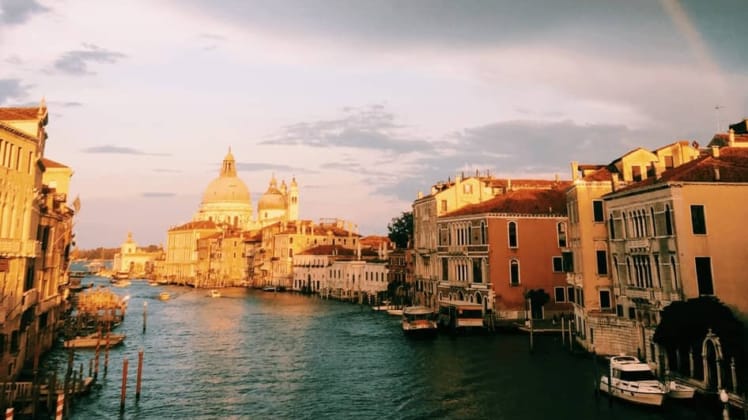
If your family is planning on traveling to Venice, Italy, beware that the city can be filled with expensive tourist traps. However, this shouldn’t deter you from traveling to this one-of-a-kind destination. You can absolutely still see the beauty and culture of Venice. This article shows you how thanks to a few tips from a local.
I am studying abroad in Venice throughout a 15 week semester with Wake Forest University. Based on my time spent in Venice, I can speak to the city like a local, or at least, repeat what the locals have told me. With my own experiences and local Venetian advice, I have put together a few tips to help your family see Venice in the most authentic way possible.
1. See San Marco Square, but don’t eat there.
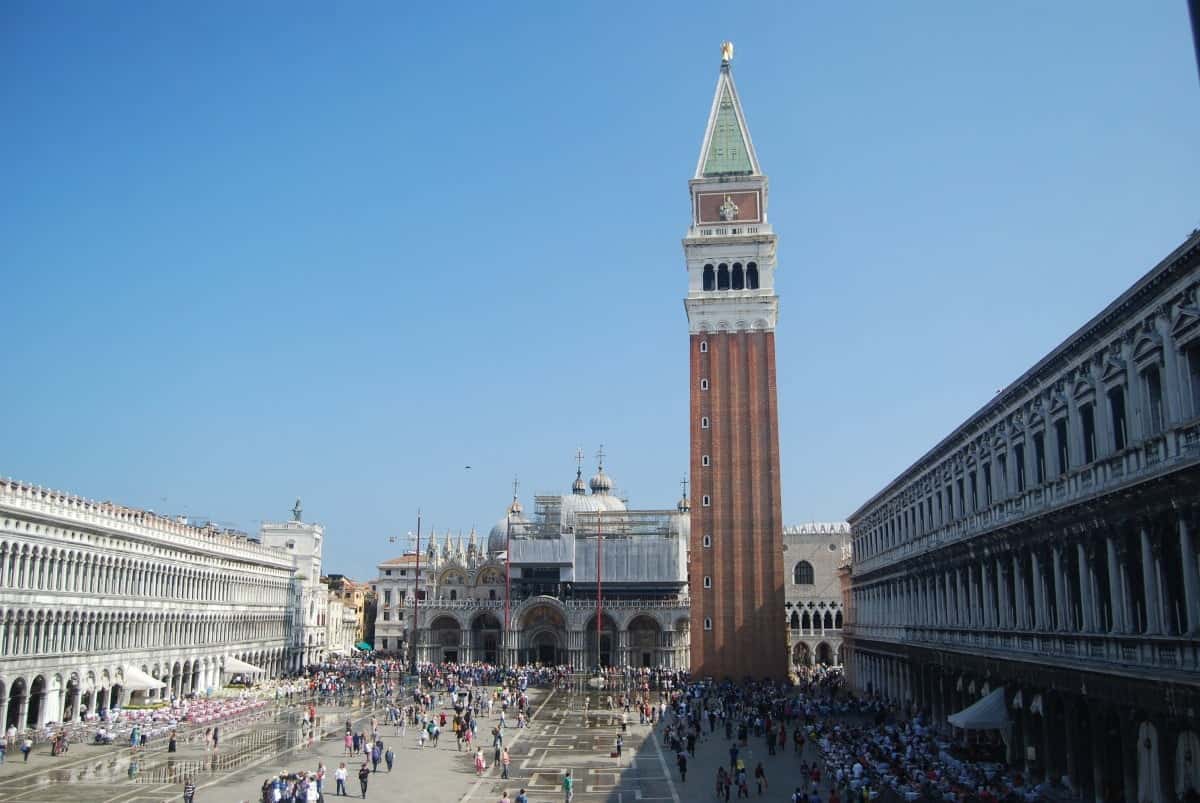
Saint Mark’s Square , or San Marco as the Italians say, is a beautiful square filled with Venetian history. Saint Mark’s Basilica, which sits at the top of the square, is absolutely worth seeing for its unique Byzantine architectural style and overwhelming gold interior. It’s so rich in decoration based on ancient style, but also because it is the church of Venice. However, after you see the square, the church, and the inside of the church, it’s probably safe to say you can walk in the other direction.
This area is packed with tourists every hour, every day, and every season. While that might seem like an exaggeration, it’s most definitely not. I would recommend seeing this square efficiently and then leaving in order to see other parts of Venice that are less crowded. Moreover, this area is heavily catered towards tourists, so the restaurants that surround the square are less likely to be authentic and are probably more expensive.
2. Skip the classic Venice Gondola ride.
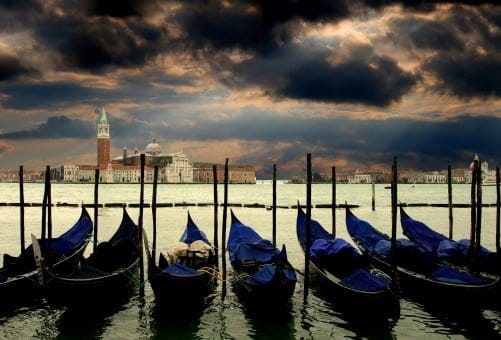
Gondola rides are a must-do for most people when they travel to Venice. However, they are usually around 80 Euro, regardless of where you go in Venice. If this is something you don’t mind spending money on, then you can usually find places around the city that don’t have tons of people in line.
However, my advice would be to land at Venice’s Marco Polo Airport for your vacation and take a water taxi to the place you are staying in. This, in my opinion, eliminates the need to spend money on a gondola ride because it is around the same price for a much longer journey. You will still get to ride a boat in the canals of Venice and see the city from the water. In the end, this will save you money because this is one of two ways to get onto the island. A gondola might seem like a waste of money afterward.
3. Never pay more than 5 euro for a Spritz or a glass of wine.
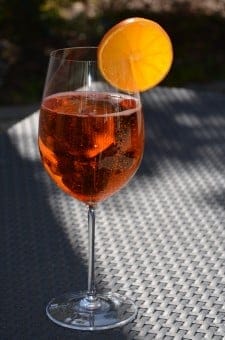
One of the best things about Venice and Italy as a whole is that it is really cheap to drink there. If you can believe it, most Spritz drinks or house wines by the glass are 5 euro each, or even less. A Spritz is an alcoholic drink that is made with Aperol, Prosecco, and sparkling water. It is a Venetian classic.
The important thing to note is that these prices are for real. And, the cheap prices doesn’t mean that they are bad. In fact, most cheap wine in Italy is of great quality that is much better than cheap wine in America. If you see them for more than that on a menu, you are probably getting ripped off.
4. Try to find a gelato shop off of a main street in Venice.

In my experience, some of the best gelato shops in Venice are off of the bigger streets. For example, the “gelaterias” that surround large tourist areas like St. Mark’s Square or Rialto are usually not as authentic as the ones that you have to wander through alleyways to get to.
In fact, most of those places are chain gelato shops like Grom, which you should probably avoid. These places tend to be more expensive and more like ice cream than actual gelato. True gelato should look creamy, but not as creamy as ice cream. After all, it is made with ice, fresh ingredients, and cream. The thing that makes ice cream so amazingly creamy is milk, cream, and egg yolks combined. This is important to keep in mind so that you taste the real thing in Venice and don’t overpay.
Related: Cookie Dough Stuffed Ice Cream Cake
5. Never go to a restaurant that has pictures on the menu.
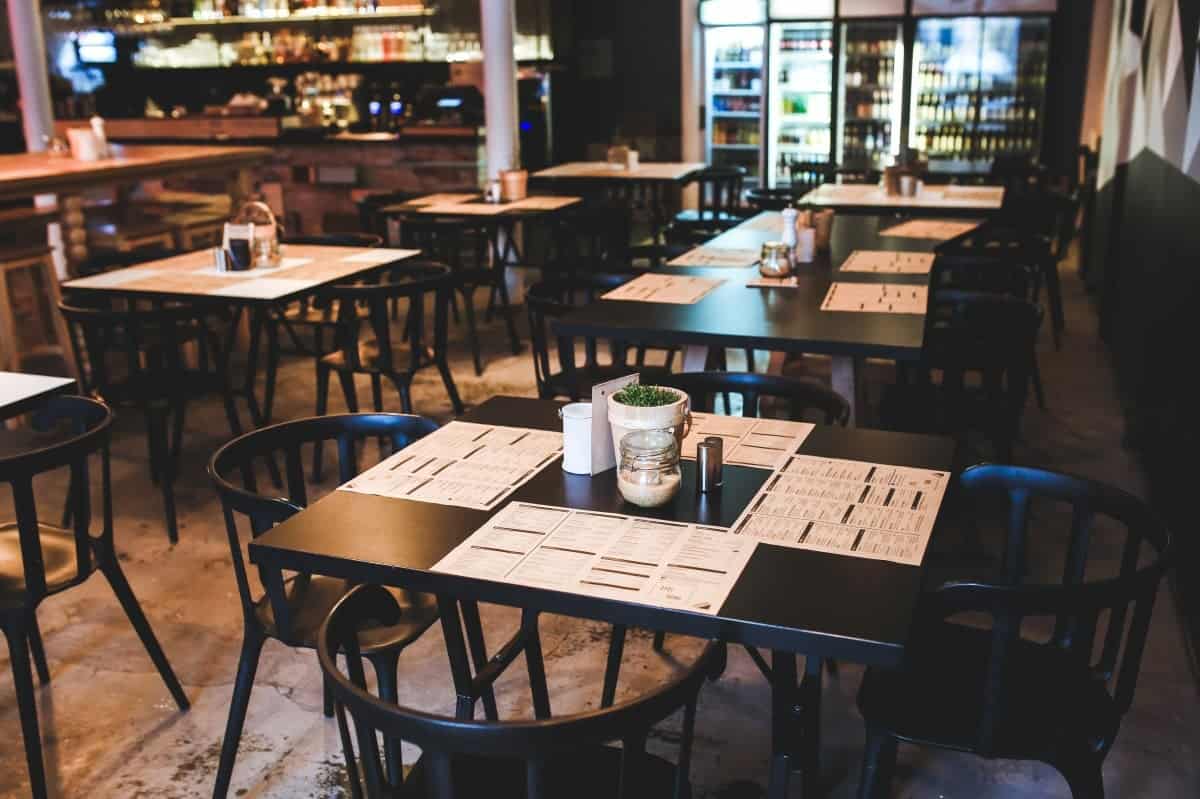
This is a great tip for Italy in general, but especially Venice. If a restaurant has pictures on the menu this usually means that they are catering towards tourists. Don’t give into the photo of spaghetti even if it looks amazing. You can definitely find another restaurant that’s probably even on the same block with an authentic menu without pictures.
6. Buy Murano glass from Murano, not Venice.
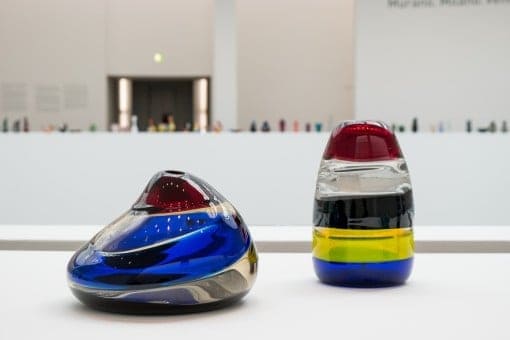
Murano is a Venetian island that is famous for making handblown glass . While you should definitely get some souvenirs, don’t buy them from the island of Venice itself. Instead, you should definitely make the trip to the island of Murano. This only requires a 30-45 minute boat ride one-way. There are tons of shops to see in addition to restaurants and glass factory tours . It is a great opportunity to see a different side of Venice that most tourists skip.
Moreover, the glass is way cheaper there because it doesn’t get transported for sales. It’s also more likely to be real Murano glass if it comes from the island.
Based on the local chatter and my own experiences, these tips are crucial if you want to see the real, authentic Venice. I think it is one of the most unique cities in the world that has so much history and culture to share. However, this can get overshadowed by the tourists that come simply to see St. Mark’s Basilica and take a gondola ride on their way to other places in Italy .
There is no reason why you shouldn’t travel to Venice. There is also no reason why you should spend too much money while surrounded by too many people. Try these tips and enjoy better, cheaper food and cultural sights.

Allison is a seasoned writer with five years of experience in editorial roles throughout the publishing industry. She graduated... More about Allison Curley
More On: Travel
Discovering Venice, Italy
Embark on a captivating journey through the enchanting waterways, rich history, and vibrant culture of Venice, Italy, as we uncover the hidden gems and timeless charm of this unique city.
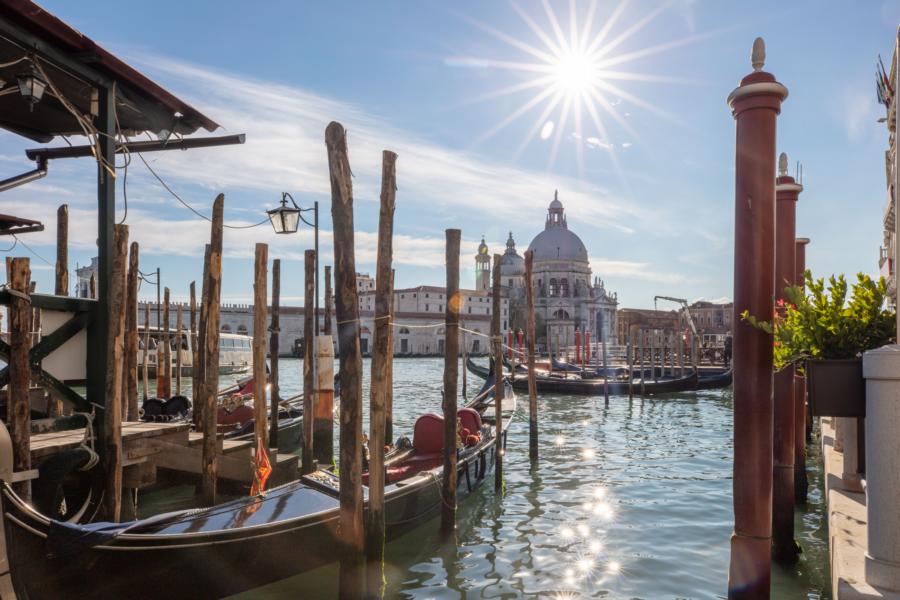
The worst tourist traps in Venice: how to avoid being ripped off
Venice is one of the most beautiful cities in the world. No wonder tourists flock there in droves to experience it for themselves. But what are the biggest tourist traps in Venice and how can you avoid falling into them? Here are a few other things to watch out for.
Table of Contents
Tourist traps in Venice: Gondola rides
A gondola ride is one of the most romantic experiences in Venice, but you can easily fall victim to inflated prices. Instead of getting on the first gondola you see, arrange a gondola ride with our reliable partner.
What to watch for
Some gondoliers may charge exorbitant rates, especially during peak times or if they sense you’re unfamiliar with standard prices.
How to avoid
Check standard gondola ride prices before heading out. Consider booking through reputable agencies or hotels, or even better, explore the less touristy parts of Venice where prices may be more reasonable.
Book instead a gondola ride online
A gondola ride for two is always romantic, not only on Valentine’s Day. A private gondola ride* costs around 160 euros for 30 minutes.
(Make sure you really book a private gondola ride, and don’t join the group rides, which are cheaper but far less romantic).

Before you head out, don’t forget to brush up on some fascinating facts about gondolas to share with your fellow travelers!
Gondola prices
The prices for gondola rides are set by the municipality and the gondoliers must abide by them. The following constraints are currently in effect (August 2023):
The following constraints are currently in effect
- DAY HOURS (9 a.m. to 7 p.m.): 80 EUR for a 30-minute gondola tour
- NIGHT HOURS (7 p.m. to 3 a.m.): 100 EUR for a 35-minute gondola tour
- tour duration may be altered by a few minutes due to traffic, tide and weather conditions
- for any other service of different duration, the price is calculated in proportion to the time
- a maximum of no more than 5 people may board.
List of official gondola stations
Contacts for information and tour reservations.
You can find the latest numbers and information on the official website , but I recommend to take a look at my comprehensive article about gondolas in Venice as well.
Literature about Venice
Reading books about Venice can enhance your experience of visiting the city in many ways:
- They help to better understand the historical and cultural context. Venice has a very exciting and rich history as well as culture, and reading books can provide this context and help you understand the city’s art, architecture and traditions.
- While the major tourist attractions in Venice are well known, there are also many hidden gems that you can discover by reading books.
- The lagoon city has also been the setting for many famous literary works, including Shakespeare’s The Merchant of Venice and Thomas Mann’s Death in Venice. Reading these works can deepen your connection to the city and give you new insights into its culture and history.
Overall, reading books about Venice can lead to a better understanding and appreciation of the city, so you can have a more fulfilling and enjoyable visit.
Tourist traps in Venice: False masks
A colorful Carnival mask is the perfect souvenir to take home from Venice, but not all masks are created equal.
The cheaper masks – 20 euros or less – are made in China, not Venice. They don’t necessarily meet EU safety regulations, which means the substances they’re made of could be harmful if you wear them on your skin.
In fact, they should be labeled “For decorative use only,” but that’s not the case with many of them. Remember, you get what you pay for.

Tourist traps in Venice: Murano glass
Another popular Venetian souvenir is Murano glass, made on the island of Murano in the lagoon.
If you want to make sure you get a real souvenir, buy Murano glass on the island of Murano itself – it’s cheaper, really from Murano and you can take the opportunity to see another part of the lagoon.
There are many shops selling fake Murano glass items claiming they are genuine.
Buy directly from verified workshops on the Murano Island or from reputable dealers. Look for the official “Vetro Artistico Murano” sticker, which certifies its authenticity.
Here you can find a map with all the official Murano glass shops in Venice and Murano. A full list can be found on the website of the Regione Veneto:
- Regione Veneto Murano Glass shops
- Regione Veneto Shop list

Tourist traps in Venice: Tourist menus
As tempting as it may be to choose a restaurant where there are photos of the food and a friendly face standing outside the door to lure you in, this is the kind of restaurant you should avoid.
You should also stay away from restaurants that advertise “tourist menus”, as these are classic tourist traps in Venice, where you will most likely get inferior food at inflated prices.
These menus often offer sub-par food at inflated prices. Beware of restaurants that have hawkers outside trying to lure you in.
Do some research and find restaurants that locals recommend. Avoid places with picture menus displayed outside. Always ask for the local menu or dine where you see a lot of locals.

Tourist traps in Venice: Street vendor
As in many European cities, there are numerous illegal street vendors in Venice selling fake designer goods such as handbags and sunglasses.
You should definitely not fall for these tourist traps in Venice, because apart from the inferior quality of these goods, you can expect a heavy fine if you are caught buying them.
Whether you stay in Venice for a week or just a day trip, you can avoid the tourist and budget traps by going to a quieter part of the city.
Stalls or wandering vendors selling cheap masks, toys, or other souvenirs.
Purchase from established stores or workshops. If authenticity matters to you, avoid impromptu street stalls, as locals normally have brick-and-mortar stores in Venice.

Share this:
- Fascination Venice
- Hop-On Hop-Off Boat Tours
- The Three Lagoon Islands
- Gondolas in Venice
- Opening times
- Admission fees
- Guided tour
- Sightseeing Venice
- The Grand Canal
- St. Mark’s Square
- The Rialto Bridge
- The Bridge of Sighs
- Bell Tower in St Mark’s Square
- Ca’ Rezzonico
- Ca’ d’Oro Gallery
- Accademia Gallery
- Peggy Guggenheim Collection
- Hard Rock Cafe
- Entrance fee to Venice
- Venice with Kids
- Rules of behaviour
- Online Tickets
- Waiting times
- Carnival in Venice
- Venice in Winter
- Christmas in Venice
- New Years Eve in Venice
- Venice at Easter
- The Venice Pass
- Venice City Pass
- Venice Museum Pass
- 16 insider tips for Venice
- Punta Sabbioni
- Beaches in Venice
- Dangerous Areas & Safety
- Filming locations
- What to eat in Venice
- Venice by Night
- Day Trip to Florence
- Day trips from Venice: 15 ideas
- Vaporetto – Water bus
- Parking in Venice
- Airport Transfer
- Public Transport
- Water taxis
- TOP 10 Hotels
- Hotel recommendations – Outside the center
- Buy Online Tickets
- Privacy Policy
- Hallo Venedig
- Les Bons Plans de Venise
- Hola Venecia
- Fascination Amsterdam

Dangerous Areas & Safety in Venice – Pickpocketing & Tourist traps
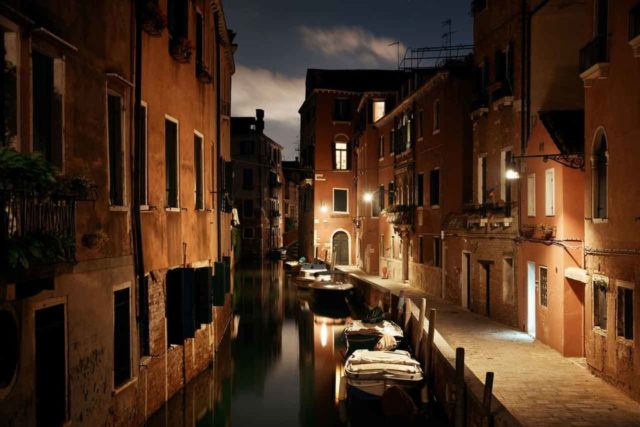
Safety during your Venice city trip – A visit to the lagoon city of Venice stands on top of most travellers´ bucket lists. Romantic lanes, mysterious waterways and many other sights offer a variety of adventures.
However, you also hear about tourist traps, pickpockets or floods. So should you avoid visiting Venice? Of course not! You should only be well-informed and follow some hints.
Table of Contents
Do I have to avoid certain areas?
In general, there are no specific areas that should be completely avoided. Nevertheless, there are places in Venice bearing a higher risk of becoming a victim of theft. Many tourists are robbed at the central station, Santa Lucia. Passengers who do not travel by train are well-advised to avoid this station located in Cannaregio.
There is also a higher likelihood of getting robbed around sights and tourist attractions than in quiet alleys. This particularly applies to places like Rialto Bridge, Piazza San Marco or Canale Grande at peak times, when a large number of tourists visit these sights.
Increased caution concerning pickpocketing!
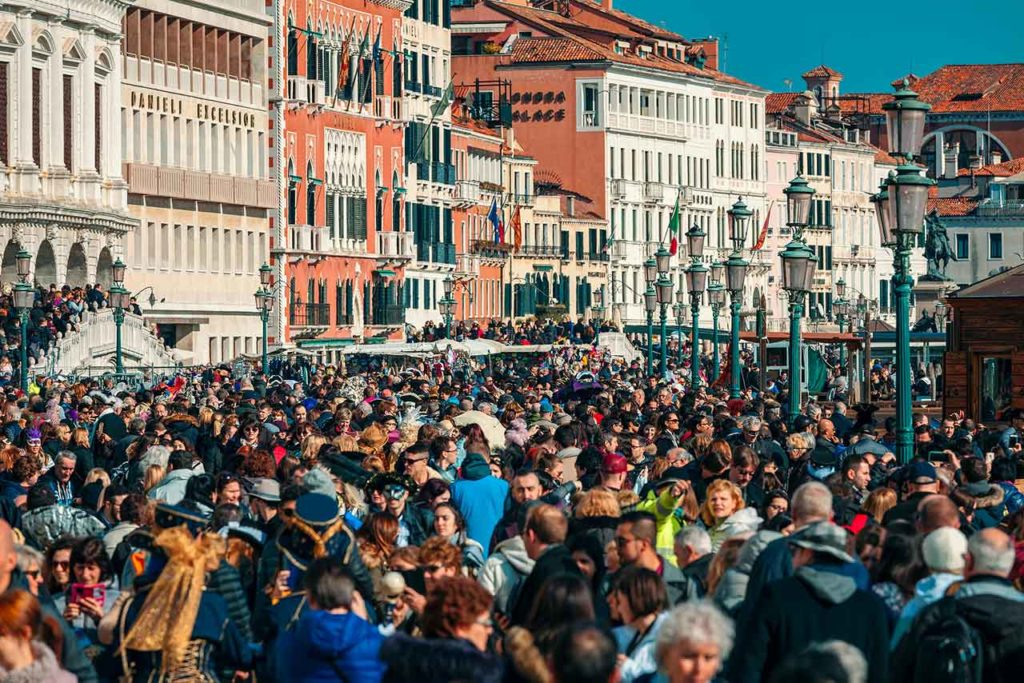
In Venice, there is no higher safety risk for visitors than in other popular holiday destinations. Pickpockets pose the biggest threat to tourists in Venice . Events of pickpocketing substantially increased within the last years. Pickpockets chiefly choose their victims in public means of transport like buses, trams or water buses. As already mentioned, they linger in places where many people come together. Wallets stored in trouser or jacket pockets are an easy catch for these professional thieves.
They are very inventive while being on the prowl. One quick jostle and your mobile is gone. In this case, the thieves often collaborate with accomplices to whom they pass on the swag. So the theft cannot be proven since the stolen goods are no longer in the hands of the perpetrator. This kind of crime is called relay theft. You wouldn´t expect a woman with little kids or pushing a pram to be a pickpocket. But this can happen in Venice. These people distract you skillfully and disappear with your money, credit card or mobile phone.
People sunken in their roadmap are easy victims, too. Such a huge map is very helpful when it comes to hiding a crime. And there are bolder scams: The day ticket for the water taxi, mobile phone or cash is snatched from you if you don’t pay attention. In busy areas, you will find more police. But you cannot really count on their help. Tourists and locals equally complain about the reserved reaction of patrolling policemen (to avoid attracting attention).
Nevertheless, you will get back all your stolen goods if you catch the perpetrator red-handed and there’s a police officer nearby. Despite being a car-free city, Venice is a popular place for thieves who are looking for valuables in parked cars. Although most parking lots and garages are monitored, pilferers will find a way to get to their swag in cars.
Tourist trap ‘Restaurant’ – Watch out for hidden costs
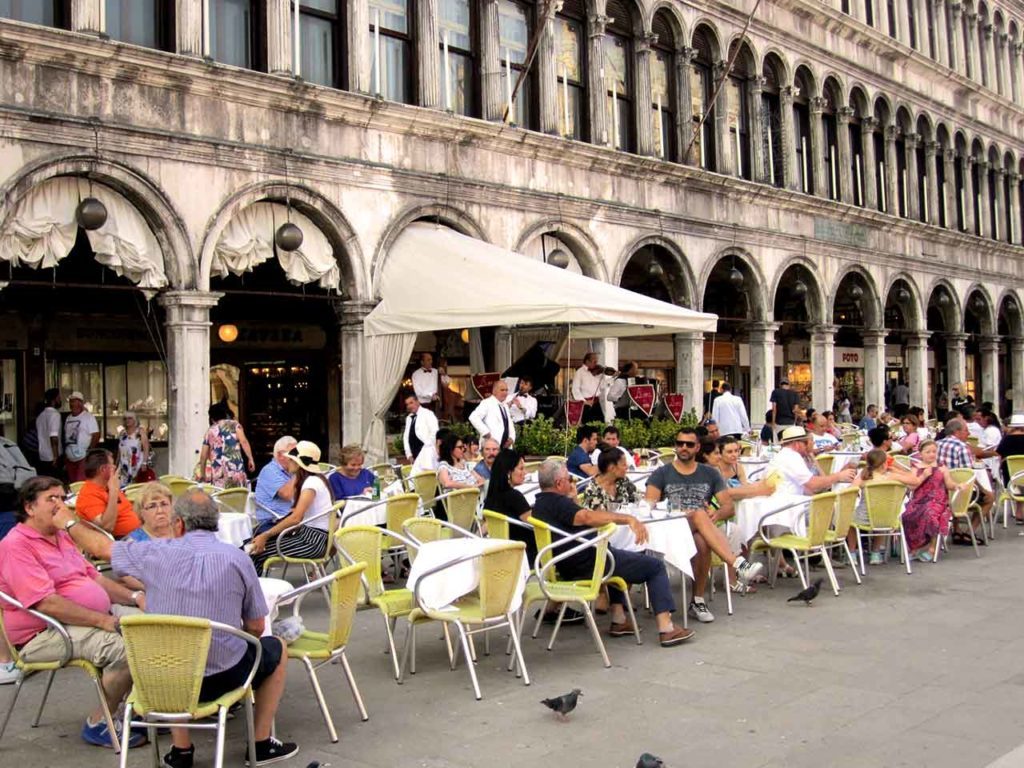
Tourist traps in Venice are similar to the ones in every other typical tourist city concerning number and nature. However, you should watch out for hidden costs while visiting a restaurant. Although a fee-for-place setting (Coperto) is usual in many Italian restaurants, you will frequently find it in small print on the menu. Restaurants advertising that they are disclaiming that fee mostly offer much more expensive dishes than the ones including this „Coperto“.
The musical accompaniment to a cup of coffee at Piazza San Marco is charged additionally. Many people become aware of this fact as late as they receive their bill. This fee comes to approx. 5-6 € per person. Of course, many tourists prefer enjoying their beer outside and restaurants, as well as bars, make them pay a high price. People ordering and settling their bills inside definitely pay less. This can lead to pizzas amounting to 17 € on the terrace whereas the regular price on the menu is only 10 € .
Dishes offered in restaurants close to sights are often overpriced and of inferior quality. Restaurants in alleys located a bit away from tourist attractions are definitely worth a visit. And all these special tourist menus aren’t worth the money, either. And if you get a recommendation from your waiter, ask for the price first. Otherwise, your bill can be very expensive. And before your payment, you should ask for the bill in order to avoid a too high price.
ℹ️ You will find a lot of information about the culinary Venice here.
Hints for your safety
To avoid becoming a victim of pickpockets, you should carry as few as possible valuables with you and you shouldn’t put your wallet into your trouser pocket unless you secure it with a lanyard as I do. Nevertheless, it is always better to wear your bag or rucksack at the front. In public institutions, don´t leave jackets containing valuables on the back of a chair.
Leave original documents in the hotel , a copy of your ID card is sufficient. Most pickpockets are exclusively interested in money and valuables. In case of a stolen or lost bank or credit card, always block all cards with a contract in your home country via a central interlock number.
Venice and the floods

On a few days every year (usually in autumn and winter), there is water not only in the canals but also in public places and alleys in Venice. This is because the sea level strongly increases due to phenomena like currents of the Adriatic Sea, the gravitational force of the moon and the sun as well as low pressure. Subjacent areas get flooded, whereby Piazza San Marco is the first place to get hit. The greatest danger concerning “Acqua alta”, as the flood is called, is the fact that Venice quickly sinks by several centimetres in case of groundwater extraction. In the meantime, the city got the problem under control by construction measures. In case of a flood hazard, sirens will sound like an acoustic warning signal. This happens prior to an increase in the tides and allows the people to find out the height of the tide in advance.
In order to warn locals and tourists early enough, the Centre for Weather Forecasts and Flood Warning publishes flood predictions several times a day. The data can be retrieved via their website and other ways of communication like social media channels. They are valid for the day of release and the following 2 days. Mainly we are talking about floods of only a few hours and centimetres.
In the meantime, the Venetians have accepted the floods. The doorways are protected by barriers of tin. For centuries, pavements and grounds have been raised in layers. Tourists staying in Venice during flood periods should bring a pair of rubber boots or buy them on-site if necessary. So they can fully enjoy their holidays, even in case of floods.
The water buses, called Vaporetti, keep on running. There may be small changes on some routes. Thus, access to the urban area is largely secured. In addition, elevated footpaths and fixed footbridges enable access to the most important sights. Acqua alta, therefore, has little or no impact on tourism in Venice. Some even describe exploring the city in rubber boots as a special experience.
The fog of Venice offers wonderful photo motives

In autumn Venice it can happen that the whole city is covered in a thick fog . In this case, the visibility is partly less than 100 metres and for many people, the lagoon city is lacking its famous glamour. At first glance, this weather has little to do with romantic, either. Some tourists even find it frightening. But there is no real danger in the fog. Of course, there is a residual risk of falling into the canal when you take a wrong step. However, this is rather due to one’s own carelessness.
Increased caution when walking is certainly appropriate, but no one needs to be afraid. Ultimately, the risk is no greater than on a foggy day in Germany. In return, you can enjoy a very special atmosphere. In the fog, it is rather quiet and only a few people stroll through the alleys. The sights offer a completely different perspective. The city appears almost spooky but beautiful during fog. This offers fantastic photo motives that stand out from all the usual holiday photos. Like the high tide, the fog can provide a special experience. Another advantage: fewer crowds mean more difficult conditions for pickpockets.
A brief summary
Please read this text as the loss of wallets, documents, money cards and smartphones is more than annoying. It is less bad if you make mistakes concerning local rules of conduct or tips.
You can find my advice on rules of conduct & tips in Venice .
RELATED ARTICLES MORE FROM AUTHOR
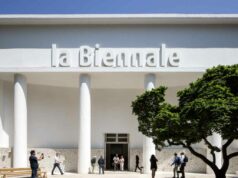
Venice Biennale 2024: admission, opening times and info
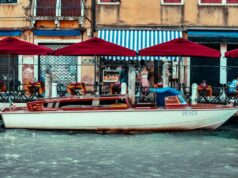
16 insider tips for Venice: Tips & Hacks
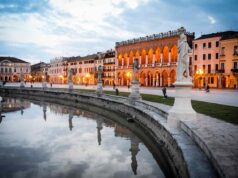
Day trips from Venice: 15 ideas for a day trip
Hello! First time in Venice, May 2022. We are on a cruise ship and they are now not permitted to dock in Venice so we are docking in Raveena. We will be transported to the airport the day prior our flight, so we will spend 1 day in Venice. Can you recommend a hotel in Venice that would offer free shuttle or ferry service to and from the airport? Being our first time in Venice we would want to be at a hotel in safe area. Also, do you know how we where we could get a covid test for our flight back to the US? Thank you for your help.
Hello Corinne, thanks for your comment! Of course, I guess that you mean the airport Marco Polo.
I highly recommend the Marriot – If you wish the have the transfer to Venice you can of course take the usua Taxi. However there is no real Transfer which is suggested by the hotel. Here is the hotel: https://www.booking.com/hotel/it/courtyard-venice-airport.en.html?aid=1471598&no_rooms=1&group_adults=2
The transfer can be booked separately, very easy, under the following link: https://www.getyourguide.com/venice-l35/atvo-express-bus-marco-polo-airport-venice-ple-roma-t72728/?partner_id=NFJUXUC
Great hotel and completely safe!
I hope that this answers your questions.
Have fun in Venice
Hi Marc Wish I’d read your excellent article before we arrived in Venice last night. My phone was stolen from me when I was jostled by someone while buying a ticket at the water taxi station. Think it was a young woman. Welcome to Venice. I spoke to police but they weren’t terribly interested. I might not be coming back!
Hi Gareth, I am terribly sorry to hear this. Yes, every big city has its downs also and even though the problem with the pickpockets in Venice is not as severe as in other big cities, like Barcelona for example, it is still possible that this happens! I hope that you were somehow able to enjoy the city experience a little bit. Best Marc
[…] is generally a safe place to visit, but like any city, it has its share of crime. Pickpocketing is the most common crime in Venice, so keep your valuables close to you and be aware of your surroundings. If you’re using […]
An elderly lady and 5 of her male friends tried robbing us at the water taxis. The first attempt was in line getting onto the water taxi when the 5 guys (all of them aprox 50 yrs old) jumped my husband ripping his wallet clean off the chain. It went flying and everyone jumped back when my husband started yelling as he was battling them to keep hold of it. Did not stop there. On the water taxis, the same elderly lady told us our luggage had to stay up front. At first we complied until i caught on. With the croud of people getting on, it was hard to see it so i just went and got it and kept it by our side. That was when i realized the old lady was the ring leader. One guy was reaching for kne of the bags when i turned away for a split second. I myself had my money in a money belt tucked up under my bra with layers over my valuables! I have been well versed in pick pockets! After that, my husband listened to my advice. I even showed several people how easy it is to pock pocket from a forward facing pouch! It is all about destraction!!
Thank you for sharing Kathleen
LEAVE A REPLY Cancel reply
Save my name, email, and website in this browser for the next time I comment.
Fascination Venice on Facebook
Who is fascination venice.
View Tickets

EVEN MORE NEWS

Venice Carnival 2025: information, programme and tips
Popular category.
- City Tour 11
- Top attractions 11
- Infos & Tips 10
- The Islands 5
- Transport 5
- Doge's Palace 4
- Boat Tours 3
- Motorcycles
- Car of the Month
- Destinations
- Men’s Fashion
- Watch Collector
- Art & Collectibles
- Vacation Homes
- Celebrity Homes
- New Construction
- Home Design
- Electronics
- Fine Dining
- Aston Martin
- Les Marquables de Martell
- Mira Villas
- Panther National
- Reynolds Lake Oconee
- 672 Wine Club
- Sports & Leisure
- Health & Wellness
- Best of the Best
- The Ultimate Gift Guide
Venice Residents Want Their City Officials to Do More to Stop Tourists From Coming in
A record number of visitors is expected to travel to venice this year. locals don't love that., tori latham, tori latham's most recent stories.
- California Banned Junk Fees, and It Could Impact Restaurants’ Bottom Line
- IV Drips Are the Newest Luxury Travel Flex
- Thieves Are Stealing Cadillac Escalades From the Las Vegas Airport
- Share This Article

While people may debate whether Venice , Italy , is a tourist trap, one thing’s for certain: It’s becoming a tourist town.
Related Stories
Savannah vs. charleston: which southern city has the best luxury hotels, why travelers are ditching paris hotels for supersized châteaux during the summer olympics, 13 trips that let you channel your inner james bond.
“Look at this, it’s out of control,” Venice native Lidia Fersuoch told the WSJ . “We’ve become Italy’s answer to Disneyland.”
Venice has always dealt with an influx of visitors, especially at peak times like the height of summer. But the numbers have increased in recent years, and locals now say that the city is at a tipping point. Businesses that once served residents have closed up shop in favor of souvenir stores and restaurants that appeal to travelers, and some types of doctors are so hard to find that residents have to travel to the Italian mainland for care.
Locals don’t think that’s enough, though. One said that the charge is just “a Band-Aid” for the problem. Others would like to see the city support larger measures in favor of locals, such as caps on short-term rentals like Airbnb, incentives for property owners to rent to Venetians, and a limit on constructing new hotels.
Until the city government takes those sorts of steps, locals feel like it’s up to them to make the world aware of their problems, and to keep the city in their hands.
“I fear there’s little hope of saving Venice,” resident Lorenzo Calvelli told the newspaper, “but that doesn’t mean I won’t fight every day.”
Tori Latham is a digital staff writer at Robb Report. She was previously a copy editor at The Atlantic, and has written for publications including The Cut and The Hollywood Reporter. When not…
Read More On:
More destinations.

You Can Now Sleep in a Ferrari Museum or the ‘X-Men’ Mansion Thanks to Airbnb

Culinary Masters 2024
MAY 17 - 19 Join us for extraordinary meals from the nation’s brightest culinary minds.
Give the Gift of Luxury
Latest Galleries in Destinations

Kalmar Beyond Adventure’s Porsche Safari in Photos

Oceaya in Photos
More from our brands, amid dip in q1 revenues, zalando tout validity of ‘ecosystem’, no a’s in attendance: oakland trails a whopping 553 u.s. teams, nintendo to announce switch successor console by march 2025, everything to know about the 2024 met gala, the best yoga mats for any practice, according to instructors.

How to Get Off the Tourist Trail in Venice
Visit piazza san marco after dark, explore the outer islands like giudecca and san giorgio, and support the city’s glassmakers, lace makers, and other artisans..
- Copy Link copied

Venice is justifiably popular, but there are several strategies for avoiding the crowds: by choosing the right time of year to visit, exploring further afield, and following tips from people who live there.
Photo by Laura Itzkowitz
La Serenissima, the City of Canals, Queen of the Adriatic—whatever you want to call it, Venice is one of the most enchanting cities not just in Italy but also in the world. I live a few hours away in Rome, but every time I return to Venice I feel its magnetic pull. Unfortunately, that pull is so strong that it risks overwhelming the fragile city. It’s no secret that Venice has been combatting overtourism for years. The city banned large cruise ships from entering the lagoon in 2021 and a much-discussed fee for day-trippers to enter the city and a limit on the size of tour groups will finally be implemented this year.
I’m not saying you shouldn’t go to Venice, but you have to be a bit strategic about it—both for the city’s sake and your own. (Feeling like a sardine crammed into a narrow calle blocked by tour groups herded around by flag-toting guides is certainly no fun.) The best way to experience Venice is to go during the low season, roughly from November through March. I went in November 2023 and found fewer tourists and better weather than in the busy summer months.
There’s also a lot more to Venice than such popular spots as Piazza San Marco and the Rialto Bridge. The city is shaped like a fish, with the Grand Canal running through it like a backwards S. The farther you go from the Grand Canal, the more the crowds thin out, allowing you to glimpse a quieter side of the city. Better yet, leave the main island behind and venture out to the smaller islands in the lagoon. Here’s how to enjoy the magic of Venice without the masses.

The Violino d’Oro hotel is a boutique 32-room hotel in the heart of the city.
Courtesy of Violino d’Oro
Experience Piazza San Marco the right way
You can’t go to Venice without seeing Piazza San Marco—the iconic square that’s practically a symbol of the city. But it’s also ground zero for hordes of tourists. “It’s nice to go to San Marco in the evening when the bars and shops close and there are a lot less tourists,” says Elena Micheluzzi, a born-and-raised Venetian and one of the sisters behind Micheluzzi Glass , one of the studios keeping the art of traditional glassmaking alive by collaborating with a furnace in Murano to produce tumblers, vases, and other glass objects that they finish and sell in their gallery in Dorsoduro. She recommends booking an evening visit to the Basilica di San Marco, the church containing dazzling Byzantine mosaics. And if you want to go see the Rialto, she suggests going to the market when it opens at 7:30 a.m., right after the fishermen have brought in the catch of the day; you might see chefs shopping for the fresh vegetables they’ll cook up for lunch.
Sara Maestrelli, the young hotelier behind the recently opened Violino d’Oro , a member of the Leading Hotels of the World only five minutes from Piazza San Marco, recommends visiting in November, December, or January, calling the latter “the most deserted, foggy, and mysterious month in Venice.” She notes, “Keep in mind that some restaurants might be closed in January, but those empty alleys with thick fog on the black and gold canals is priceless.”

Take a vaporetto (or water bus) to one of Venice’s 100+ islands for a calmer experience.
Photo by Yuriy Biryukov/Shutterstock
Visit the outer islands
Most tourists stick to the well-worn streets and canals of the main island, but the Venetian lagoon contains more than 100 small islands; the most important are accessible by vaporetti (the waterbuses that ply the canals). Aside from the most famous islands, like Murano (known for its many glassmaking furnaces) and Burano (the fishermen’s island with a history of lace making where all the buildings are painted bright colors), there are lots of other little islands to explore. Giudecca, for example, is opposite the Zattere in Dorsoduro, one of the six sestieri (i.e., historic districts) on the main island. “On the shore, there’s the Basilica del Santissimo Redentore, the famous church by Palladio celebrated with the Festa del Redentore in July,” Micheluzzi says.
She also recommends the Isola di San Giorgio, explaining that it’s “in front of San Marco but far from the crowds,” and noting that it’s home to the Fondazione Giorgio Cini (a cultural institution focused on the arts, music, and humanities) and the Basilica di San Giorgio Maggiore , whose bell tower has the highest viewpoint in Venice. To learn more about glassmaking in the 20th and 21st centuries, you can visit Le Stanze del Vetro , an exhibition space run as a joint venture between the Cini Foundation and Pentagram Stiftung. Also on San Giorgio is La Compagnia della Vela , which organizes regattas and runs a sailing school with short two- to four-day courses that travelers can join.
Although Venice is known for its artistic riches and historic architecture, it also has places for nature lovers. Take Lido, for example—the only island in the Venetian lagoon with a sandy beach where you can swim. Micheluzzi notes that you can go for a bike ride to the WWF Oasis Dunes of the Alberoni , a protected 395-acre natural oasis with a 10-mile bike path and a lighthouse. Maestrelli recommends visiting the little island of Pellestrina near Lido—home to the Ca’ Roman nature reserve—and staying for a sunset dinner at Ristorante Da Nane .

The Casa Museo Querini Stampalia offers guided tours every Sunday morning.
Photo by Loris Casonato Photography
Consider lesser-known alternatives
While all the tourists line up to get into the Doge’s Palace, the Basilica di San Marco, Galleria dell’Accademia, and the Peggy Guggenheim Museum, there are ample under-the-radar museums, churches, and other attractions that don’t draw huge crowds. Consider visiting these alternative sites.
On my most recent trip to Venice, I visited Palazzo Grassi , one of the homes of the Pinault Collection, which organizes modern and contemporary art exhibitions in an 18th-century palazzo on the Grand Canal. (The same ticket will get you into Punta della Dogana, the other seat of the Pinault Collection in Venice.) Micheluzzi recommends Ca’ Rezzonico , the museum dedicated to the 1700s, and its gardens. She also suggests visiting the Museo Fortuny , which houses early 20th-century artist and designer Mariano Fortuny’s studio, the Casa Museo Querini Stampalia and Gardens of Carlo Scarpa, and the Negozio Olivetti , the showroom for Olivetti typewriters designed by midcentury architect Carlo Scarpa.

The Scuola Grande di San Rocco building remains almost untouched since its construction in the mid-1400s.
Photo by ArTono/Shutterstock
Churches and religious buildings
Beyond the museums, there’s a wealth of Renaissance art inside the city’s churches and religious buildings by the Venetian masters Veronese, Titian, and Tintoretto. During my stay at Violino d’Oro, Maestrelli brought me to see the Scuola Grande di San Rocco , a lay confraternity covered in more than 60 monumental paintings by Tintoretto, and it was almost empty. We also visited Santa Maria Gloriosa dei Frari , which contains the tomb of sculptor Antonio Canova as well as works by Titian and Bellini. Micheluzzi recommends the Church of San Pantalon , which contains the world’s largest ceiling painting on canvas.
“I love to find some peace during hot summer days behind San Marco in the Giardini Reali ,” says Maestrelli. She notes that there are many hidden gardens in Venice, like the Gardens of the Scuola Grande della Misericordia . Micheluzzi recommends the rose gardens at San Francesco della Vigna , a Franciscan convent in Castello, the sestiere where the Venice Biennale takes place.

The menu at Corte Sconta comprises clams, shrimp, octopus, tuna—and lots of great pasta.
Photo by Anna Ambrosi
Eat where the locals eat
With about 30 million tourists visiting per year and an estimated population of 257,777, it might seem impossible to find authentic restaurants that cater to locals rather than tourists, but with a bit of effort, you can do it. When in doubt, ask the concierge at your hotel where they goes to eat in their free time, not where they tell hotel guests to go.
For example, Maestrelli brought me to Enoteca Schiavi , a no-frills wine bar in Dorsoduro for cicchetti . We chose a bunch of small bites from the counter and ate them on paper plates perched on the stone wall overlooking the canal outside the bar. For dinner she recommends Osteria Al Bacareto , which has been serving traditional Venetian dishes like baccalà mantecato (whipped salted cod) and sarde in saor (sardines in sweet and sour sauce) since 1971.
Micheluzzi recommends Corte Sconta , which sources seafood from the Rialto Market and vegetables from the island of Sant’Erasmo, and Al Covo , run by a husband-and-wife team (he’s Italian, she’s American) who adhere to the Slow Food movement. Both are in Castello, which tends to be a bit quieter than San Marco.

Pick up unique vases and glassware at Micheluzzi Glass, which is run by sisters Elena and Margherita Micheluzzi.
Photos by Bianca Vannucchi
Support local artisans
Skip the tourist shops hawking cheap, industrially produced “Murano glass” objects, and seek out the artists and artisans who are struggling to keep this tradition alive. Aside from Micheluzzi Glass, which has a gallery in Dorsoduro, the studios to visit in Murano are Orovetro , Vetreria Venier , and Berengo Studio , which collaborates with contemporary artists.
For textiles, Micheluzzi recommends Tessiture Luigi Bevilacqua , one of the last remaining artisanal weaving workshops left in Venice that still produces velvet fabrics using 18th-century looms. To buy authentic handmade lace from one of the last remaining ateliers that still makes it, head over to Martina Vidal on the colorful island of Burano. Another artisan shop that Micheluzzi recommends is Signor Blum , which makes whimsical wooden puzzles.
Stay in a hotel, not an Airbnb
Though Airbnb has always marketed itself as a way to experience a destination like a local, in Venice the home-sharing platform is driving up the price of housing and squeezing locals out of the city. If you want to support Venice and Venetians, stay in a hotel that employs locals and supports the city’s economy.
The aforementioned Violino d’Oro is a design lover’s dream with an eclectic mix of contemporary art and midcentury design in a location that’s perfect for those who want to stay in the center of the action and have easy access to Piazza San Marco at night, after the crowds have dispersed. If you’d prefer a quieter location, consider the glamorous Belmond Hotel Cipriani on Giudecca Island or San Clemente Palace Kempinski , which occupies its own private island. Both hotels have a boat that ferries guests to and from Piazza San Marco.
Take a gondola ferry
A standard gondola ride costs €90 for 30 minutes during the day or €110 at night, but there’s a money-saving hack that the locals use. At a few designated points in the city, you can catch a gondola ferry to cross the Grand Canal for just €2. The ride only lasts a few minutes, but it’s the fastest way to cross at points where there’s no bridge or vaporetto stop.

Can Venice turn the tide on 'tourist trap' restaurants?
Hurricanes, rangers open playoff series; nhl releases complete schedule, kentucky derby victory aboard mystik dan provides signature win for jockey brian hernandez jr., david pastrnak scores in overtime to lift bruins to game 7 win over rival maple leafs, adrian otaegui makes up 5 shots to win china open, tiger woods accepts special exemption to play in us open at pinehurst.

WRAL Late News
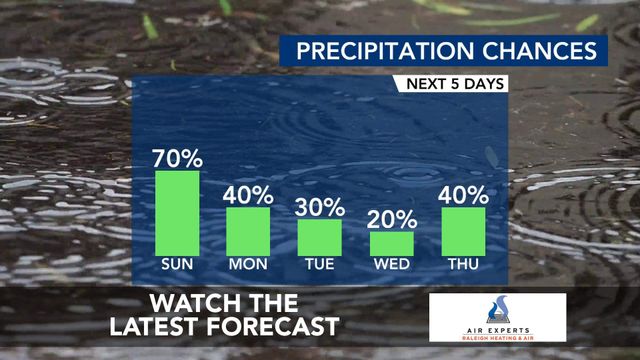
WRAL WeatherCenter Forecast

Evening Pick 3 Pick 4 and Cash 5

Powerball Drawing

Daytime Pick 3 and Pick 4 Drawing
Is Venice Just Another Tourist Trap - Or A Unique Wonder?
Venice is one of the most romantic and touristic cities in Europe, but here's why it is more than just another tourist trap.
Quick Links
There are plenty of places without tourists in venice, locals are friendly to tourists, venice can be visited on a budget.
Venice is one of the most famous cities in the world. It is one of the most romantic and unforgettable cities with people flocking to visit it from all around the world. There is even an expression in some countries in Europe (e.g. Germany) that goes something like "See Venice and die." In other words, once one has seen Venice, one can live the rest of one's life with the fulfillment of knowing one has seen the best of what the world has to offer.
But is Venice actually worth it or is it just another tourist trap? It is true that there are scores of tourists in Venice, but that hasn't come at the expense of the city's character and vibe. Venice is a stunning city and one that is well worth visiting.
While there are plenty of tourists in Venice, it does not just feel like another tourist trap. The historic island is large and tourists only tend to crowd around certain parts of the island (like St Mark's Square, the main shopping street, around the train station, and the famous Rialto Bridge (where Spider-Man was attacked in Spider-Man: Far From Home ).
- Touristic Places In Venice: St. Mark's Square, Rialto Bridge, The Main Shopping Streets
If one is planning to get a drink or food in these popular parts of Venice, one should be careful to check the prices first (they may be very high tourist prices). But take the time to wander around the city and one will find plenty of cafés and restaurants frequented mainly by locals.
- Tip: Have A Drink Where People Are Speaking Italian
All of Venice is an outdoor museum and so it can be difficult to know which places are not so touristic. A couple of tips would be to avoid the popular places above (only if one wants to be off the tourist drag) and stop by places where the customers are speaking Italian. If the menu is also only in Italian, it can be an indication that the place has a local clientele.
St. Mark's Square is the heart of Venice and a must-see , just expect the prices to be accordingly higher if one would also like to dine in the square.
Related: These Are The Popular Spots You Saw In Casino Royale
In some places, locals get tired of so many tourists seemingly overrunning the place they call home. It can get frustrating for locals that every time they go outside some tourist asks for directions or for their picture to be taken.
- Attitude: Positive Toward Tourists
But the Venetians are mostly glad of the tourists. After a difficult few years of the pandemic, tourists are finally returning to Venice and the locals are happy about it.
Venice is a place where the locals make one feel welcome and at home. It is not a tourist trap where one feels like locals only see them there to spend money.
- Tourists: 5.5 Million Tourists Annually (2019)
According to statistica.com , Venice is the eleventh most popular tourist destination in Europe (discounting Antalya and Istanbul in Turkey). It has nearly as many tourists as major cities like Madrid, and Berlin received around 5.5 million tourists in 2019.
Related: Here's why Venice Can Be Even More Stunning When It Rains
While many may consider Venice to be an expensive place to visit, one can actually easily visit the city on a backpacking budget. Because of the superb trains running every ten minutes connecting the modern part of the city on the mainland with the historic island of Venice, one can choose from accommodation on the mainland.
- Accommodation: Stay On The Mainland To Save Money
The train to the island only costs around $1.50 and takes around 10 minutes.
Trains Mainland Venice To The Historic Island:
- Cost: Around $1.50 One Way
- Duration: 10 Minutes
- Frequency: Every 10ish Minutes
Summer can be very warm and this is when the tourist season is in full gear and the costs are the highest. Go in the spring or autumn and the weather will be cooler and costs will be lower.
Hostels are a great way for backpackers to save money while in Venice . E.g. in the summer, the cost of a dorm bed at Anda Hostel can be as much as $40.00 per night but in the off-season as low as $15.00.
In short, Venice is one of the urban wonders of the world and so does not need to be a tourist trap. It is one of the most rewarding places to visit in all of Europe.

- All Lighting
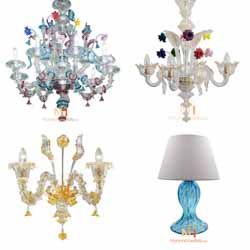
- Picasso Heads
- All Sculptures
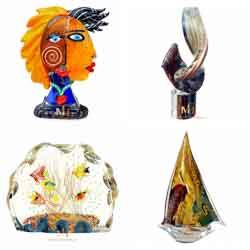
- Christmas Ornaments
- Weddings Gifts
- All Home Accessories
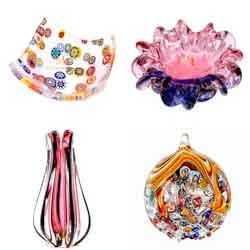
- Dining Table
- Coffee Table
- Dressing Table
- All Furniture

- Water Glasses
- Cocktail Glasses
- Wine & Champagne Glasses
- All Glasses
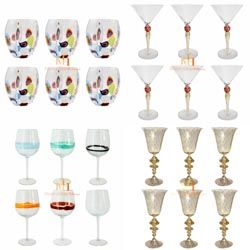
- Jewelry Set
- All Jewelry

No products in the cart.
Murano Glass Shop Venice – How to Shop for Murano Glass in Venice
Currently looking to purchase some Murano glass ? You may be in Venice or planning to go there soon and you would like to know where to buy genuine glass art there. You will find there are many Murano glass shops, but not all of them are trustworthy: prices vary so much it is hard to tell what is the proper price, and counterfeit glass can be found even in Venice. Don’t risk guessing and buying in some random shop, we are here to help you avoid falling for the traps, so you can go home with some real, certified Murano glass. This Murano Glass Shop Venice Tourist Guide is here to help you avoiding the most common tourist traps.
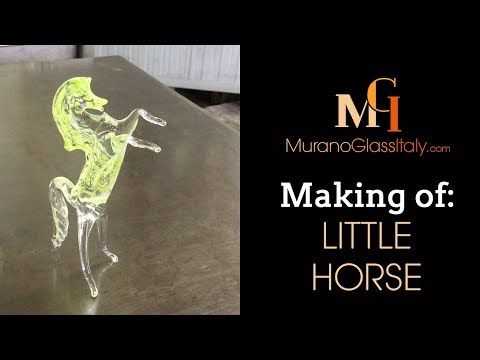
Fundamentals
Each chapter can be read individually, but to get the most out of the guide, you should read it from start to finish, take notes, and apply what you’re learning as you go. You can also bookmark the guide and come back to it for reference as needed.
How To Identify The Real Murano Glass – Top 4 Characteristics
How To Shop For Murano Glass In Venice ( current article )
7 Things That Affect Murano Glass Prices
A. Venetian Glass, Murano Glass or Italian Glass? What is the difference?
Take just a few moments before purchasing to read the labels. If you have any doubt that the artwork is genuine, here are some tips to help you weed out the imitations:
First, if you see art branded as “Italian Glass” , it is likely counterfeit made not in Murano, but in a different region of Italy. Murano is not a brand, it is an origin. Only artworks made in Murano can be labelled as Murano glass.
Artworks labelled as “Italian Style” , or even “Murano Style” , are likely counterfeit. These vague labels could mean the glass was made in Czech Republic or even China.
Then there is “Venetian glass” which can be confusing as Murano is a part of Venice. Some may call it “Venetian Glass” to describe the style, but be attentive to their aversion to label it as true “Murano glass”.
“Murano Glass” is the most reliable label to search for. Unfortunately, the label alone can’t secure its authenticity. As a wise shopper, don’t be shy to ask questions about the piece. Be extra aware if you encounter an offer that seems “too good to be true”. It is a common trap used on tourists looking for a deal. You can check how to recognize real Murano glass in our follow-up article.
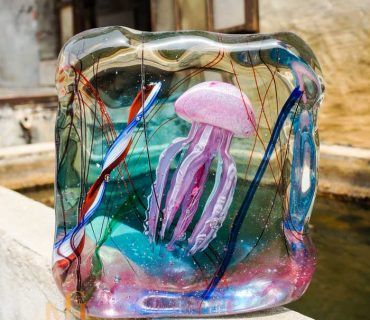
B. Avoid the “free-tours” to Murano
This helpful piece is how spot a common tourist trap in Venice centered around Murano glass. Salespersons, hired by glass factories, tempt tourists with a “free-tour” of Murano. It sounds harmless at first, but the “free-tour” will be brief, limited to one place, and end with pressure to purchase glass from their shop. The salespersons will only take tourists to the glass factory that hired them. There, they perform a short glassblowing demonstration. Then, they take the tourists to their over-priced shop. Tourists then feel obliged to purchase something to repay their free-tour despite it being short and limited. This is often where the highest priced glass is. They rely on the inexperience of the tourists to not know a fair price for glass.
It is better go to Murano on your own by taking a Vaporetto , the water public transports of Venice, to Murano. You can check how to reach it in our corresponding article that lists which Vaporetto will take you there.
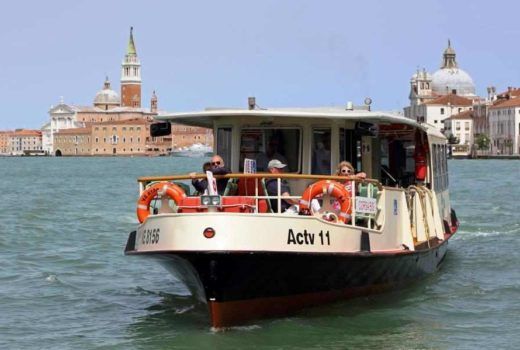
C. Not all Murano glass shop Venice are trustworthy
In Murano, there are more Murano glass shops than cafés. It is Murano’s biggest attraction and many Murano glass shop Venice shops take advantage of the tourists. Even on Murano, there is counterfeit glass made in Czech Republic or China posing as Murano glass in the shop windows. Some artists have their workshops open to public where you can see the art being made before it is placed on the shelf. However, it is the real masters of glassblowing that operate behind closed doors to keep the secrets of trade sacred and in trusted hands. If you want to buy certified Murano glass from the best artists in Murano, visit our shop where you will find the best Masterpieces to fit to your home. Authenticity is guaranteed.
Visit our website MuranoGlassItaly.com for a wide collection of handmade unique masterpieces!
All our artworks are 100% handmade in Murano, Italy and they are always provided with a Certificate of Authenticity. We will ship the artwork safely to your door step.

Related posts
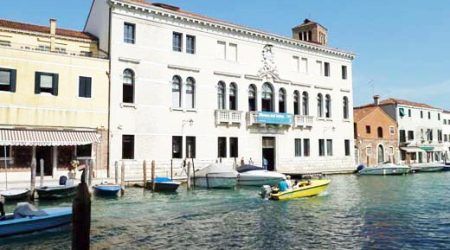
Murano Glass Museum
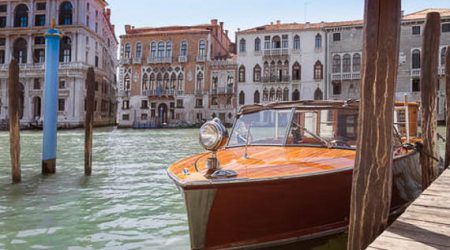
The Best Luxury Hotels in Venice, Italy
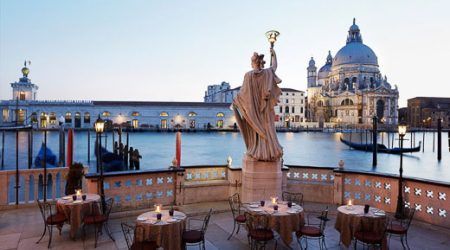
Best Restaurants in Venice – Italy
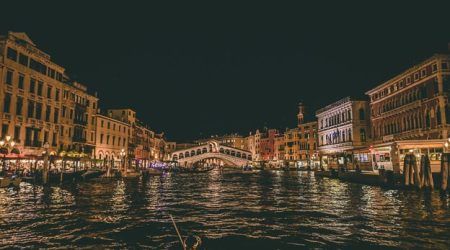
Guide to Venice Nightlife and Bars

Places to Eat in Venice
Comments are closed
MuranoGlassItaly 440 reviews what our clients say rating 4.89 / 5

MuranoGlassItaly Store VAT: IT01840430936 All Rights Reserved

So-Called 'Tourist Traps' That Rick Steves Loves
N ot all tourist traps are created equal. Sometimes you can have a blast visiting an extra-touristy place, too. While hot spots like the Amalfi Coast, Venice, or Toledo may be filled with tourist trap attractions and restaurants, these destinations are still among the most beautiful in the world. Listening to the advice of travel experts like Rick Steves will help you organize your trip in the most enjoyable manner -- no matter how big the crowds are.
The American TV show host and author is well-known for his love of underdog destinations and under-the-radar places. Still, there are uber-popular European getaways that Rick Steves loves despite all the shortcomings of overtourism. At the end of the day, it's not so much about where you go as it is about how you plan your time there. Let's embark on this grand tour of European destinations that often get described as "tourist traps," with Rick Steves as a guide.
Read more: 28 Bucket List Destinations That Everyone Needs To Experience At Least Once
Salzburg, Austria
An ultimate stunner, Salzburg is among the most walkable and history-filled European cities . Baroque architecture is everywhere you look, the epic 900-year-old Hohensalzburg Fortress towers over the city, and Alpine peaks provide an ultra-cinematic background. Also, Salzburg is the birthplace of Mozart and the primary filming location for the 1965 Julie Andrews-led movie The Sound of Music. When you've got so much beauty, people will flock to enjoy it. "I love this city, but it's overrun with tourists," concludes Steves before adding that he chooses to "celebrate" them rather than complain.
In the case of Salzburg, the crowds are justified, and instead of fighting it, the best way is to embrace the touristy side. That in no way means that you should succumb to the tourist traps of the Old Town. Whether it's the Mozart pilgrimage or visiting the Sound of Music, have a clear plan of places you're going to (preferably with prices), always check the menu before ordering at the pubs and restaurants in the city center, and be sure to venture outside of the touristy Altstadt to get a true picture of the town.
Hallstatt, Austria
There's hardly a dreamier village in the world than Hallstatt. Hugged by the crystal-clear waters of Hallstätter See and dramatically placed against an alpine backdrop, it's a photogenic delight, with its 18th-century stone Evangelical Church and streets filled with fairytale-like colored houses. Moreover, Hallstatt also boasts the oldest salt mine in the world . No wonder tourists want to see these shores, the scenery is irresistible. The surge of popularity of Hallstatt is so big that in 2023, locals blocked the tunnel leading to the village, demanding caps on daily visits.
Rick Steves writes about Hallstatt as a more peaceful alternative to Salzburg. The host recommends spending a night to fully escape the crowds. With the majority of visitors being day-trippers, staying overnight will allow you to immerse yourself better in the joys of alpine living, greet the spectacular sunrises over the lake, and have a village largely to yourself when the main visitors have boarded their tour buses and left. Hallstatt is also a getaway to the stunning Dachstein Mountains with plenty of hiking and cycling trails.
Toledo, Spain
Proximity to Madrid and easy access by train and bus make historic Toledo a prime day trip destination from the Spanish capital. This, in turn, casts a "day trip curse" on the town. Think overpriced, inauthentic restaurants and tacky souvenir stalls on narrow, crowded streets. And while the tourist trap qualities are certainly there, Toledo is a gem of a town that deserves every visitor it gets. Occupying a hill over the Tagus River, it lures you with an amalgam of cultures, the mighty Alcázar of Toledo, and marvelous architecture everywhere you look.
Rick Steves admits that Toledo is "mobbed by day-trippers" and advises to stay for the night to see how "the real Toledo emerges." Thankfully, this town surely knows how to keep you busy throughout the day, and it's a treasure trove of world-class attractions. Step inside the gorgeous High Gothic Toledo Cathedral to witness the works of El Greco, Goya, Titian, and more. Get lost in the maze of twisted streets filled with old churches, mosques, and synagogues. Don't forget to try the marzipan (or mazapán de Toledo); the sweet treat has been produced here since the 16th century and enjoys EU protection.
Cinque Terre, Italy
Four million. That is the number of visitors the UNESCO-protected Cinque Terre National Park received in 2023. The five dramatically perched villages on Italy's Ligurian coast are among the most alluring European attractions. Car-free, reached only by train and connected by an epic hiking trail with spectacular coastline views , Cinque Terre gets incredibly crowded during the high season. The tourist trap restaurants prey on visitors on the narrow streets and sea-facing piazzas of the tiny villages, making people spend more on less than authentic cuisine. But Cinque Terre remains a stronghold of tradition, a place to "inhale slower-paced Italian culture in perhaps its purest form," per Steves.
The travel guru is a passionate admirer of the national park, and Vernazza is among his favorite European beach getaways. Steves enjoys what is known as "la vita pigra di Vernazza" (or the lazy life of Vernazza). That includes sipping gelato on the bench while people-watching, taking long passegiatas (serene strolls), admiring the craggy coast and infinite Liguarian blue, and tasting locally-produced wine on scenic restaurant terraces. Just stay overnight to experience the peaceful Cinque Terre without the day trippers.
Capri, Italy
Sublime is a good word to describe Capri. Rising from the azure waters of the Bay of Naples, its high white rocks, scattered Roman villa ruins, exclusive resorts, and picture-perfect panoramas make it a sought-after bucket list destination. This island is the full package, unapologetically cinematic and utterly beautiful, but there's another, more unflattering side to Capri. Rick Steves calls Capri a "world-class tourist trap" due to astronomical prices, hordes of day-trippers during the summer months, and the rushed atmosphere on the ground. Still, there's so much to love here, and visiting outside the high-season craze will allow you to encounter a blissful island escape.
Rick Steves suggests a boat tour around the island for the best sightseeing. Go to the Blue Grotto, too; it's among the most striking sea caves in the world for a reason. You can also visit Grotta Bianca (or the White Cave) as an alternative, with its limestone glory and dramatic coastline views. To save money on accommodation instead of uber-expensive hotels in Capri town, opt for the better-priced B&Bs in Anacapri. And certainly don't eat at the tourist trap restaurants next to the port of Marina Grande -- choose the places outside the popular areas for authentic gastronomy.
The Black Forest, Germany
Spanning over 2,320 square miles in the southeast German state of Baden-Württemberg, the Black Forest has space for everyone to enjoy its green delights. Here, thick woods meet idyllic valleys, the mountain ranges rise over the quaint towns, and the rivers create idly saunter by -- heaven for anyone looking for a natural escape. However, it is also among Germany's biggest tourist traps , according to Rick Steves. But worry not; that status primarily applies to the spa town called Titisee, which is packed with tacky memorabilia stores, tourist crowds, and all things cliché. Steves loves the other parts of the Black Forest, untouched and fresh air-filled.
The best way to experience the blissful side of this region is by venturing into the countryside and exploring the sleepy, small towns. Steves recommends the spa town of Wolfach as a must for any Black Forest itinerary. It boasts a picturesque cafe-dotted market street, a logging history museum in the castle, and excellent access to hiking trails. The TV host also advises trying the Black Forest cake, a mouthwatering local dessert made of dark chocolate and finessed with cherry filling.
Innsbruck, Austria
Although it may be "tourist-filled," as Rick Steves writes in one article, and an "overrated tourist trap" in another blog post, the TV host still finds Innsbruck filled with medieval charm and beauty. The town's location is majestic, and the high Alps are everywhere, allowing visitors to enjoy stunning panoramas. The Nordkette cable car is located within the city limits, enabling you to have breakfast on the gorgeous Main Square in the morning and then an alpine lunch at 2,256 meters, marveling at the view of Innsbruck from the top. Such accessibility is a major draw of Austria's fifth-biggest city.
Innsbruck is an ideal place for an easygoing alpine vacation. Visitors are often amazed by the breathtaking Baroque interiors of the old churches, the charming provincial museums (like the Tyrolean Folk Art Museum that Rick Steves visited for the Innsbruck episode, available on YouTube ), and tasting hearty Tyrolean cuisine. Don't miss the crumbly nut strudel at Strudelcafé Kröll, have a bite of Graukäse (local grey cheese), and munch on soul food staple Tiroler Gröstl (a fried mix of bacon, onion and potato with egg on top).
Venice, Italy
For Steves, Venice is a tale of two cities. One is "garishly touristic," as the TV host writes . It's the overpriced St. Mark's Square restaurants, rip-off souvenirs produced a thousand miles away, crowds invading the narrow bridges, daytrippers providing nothing to the local economy, and selfies, selfies everywhere. It's a tale of a fragile urban ecosystem pushed to the limits of its capabilities where tourists are not welcome anymore.
Yet, worry not, another Venice exists. Rick Steves promotes the "romantic and tranquil" side of the city that you can encounter by booking an overnight stay and getting off the beaten path. Early morning and late evening see La Serenissima at its most sublime, as the pathways become deserted, the canals exude stillness, and the boats peacefully sway to the rhythm of unhurried lagoon waves. That's exactly the kind of Venice you should aim to discover. And don't forget to check out the under-the-radar lagoon islands like Giudecca with white marble Santissimo Redentore Church, San Giorgio Maggiore with spectacular Venice views, and luscious Lido, representing the classic Italian Adriatic resort experience.
Granada, Spain
It's very easy to fall for Granada. This Andalusian town is constantly buzzing with excitement, offers some of Europe's most impressive architectural masterpieces, and greets you with an enticing mixture of Christian and Moorish civilizations. Coming here, you are immersed in a universe of easygoingness filled with the sounds of street musicians, lively conversations coming from the many terraces on the many plazas, and the excitement of impromptu street parties. Sure, there are numerous tourist traps here and there, but they all weave seamlessly into the overall vibe. Just steer clear of restaurants next to the monuments, don't buy from street souvenir vendors, and purchase tickets for attractions from authorized sellers.
The Alhambra, a magnificent UNESCO-protected Moorish fortress, is the undeniable centerpiece of Granada. Book your tickets beforehand to get in; the entry slots are limited, and you risk missing an opportunity to see a true triumph of ninth-century engineering. The Rennaissance Catedral de Granada is another must, guaranteed to take your breath away with its exquisite interiors. And take a peek inside the Alcaicería covered market. Steves sums it up well, saying that "it's a tourist trap today, but this colorful mesh of shopping lanes and overpriced trinkets is still fun to explore."
San Gimignano, Italy
San Gimignano is the original Manhattan of the ancient world. At the height of its power during medieval times, this Tuscan town boasted 72 so-called tower houses -- erecting one was a show of wealth for local patrician families. Even though only 14 towers lived to see the 21st century, San Gimignano epitomizes Italian architectural genius. The town is a time capsule, as the whole historic core has been left largely intact throughout the centuries. As an authentic Tuscan gem, it also receives loads of tourists who mostly come here for day trips.
"Despite its tourist-trap feel, it's still worth slotting into your Italian itinerary," says Steves , who suggests staying overnight for a special romantic experience. As with other popular small towns around Europe, the magic returns once the daytrippers disappear. Visitors stay among the wonderful rolling hills, olive groves, and wineries of the region, a perfect recipe for a high-quality slow travel holiday.
Fado In Lisbon, Portugal
Fado is not just a Portuguese musical genre that originated in Lisbon in the 19th century -- it is a way of life. Unfortunately, today, if a destination is famous as a "birthplace" of something, the inauthentic, tacky, overpriced "experiences" start to pop up around the most popular areas, promising authenticity and only deceiving in the end. That's the case in the Portuguese capital. According to Steves , attending a fado concert has become "one of Lisbon's favorite late-night tourist traps." The worst-case scenario here is listening to a mediocre, uninspired performance with a disinterested audience that includes zero locals eating food that costs much more than it should.
But how do you find a fantastic establishment that plays authentic fado? Your first option is to visit the interactive Fado Museum, which fully immerses you in the history and modernity of this fascinating music genre. The Alfama district (behind the museum) is filled with tiny, casual bars where you can stumble upon a genuine fado performance and have a fantastic Portuguese meal to accompany it.
Amalfi Coast, Italy
"Amalfi Coast towns are pretty but touristy, congested, overpriced," laments Rick Steves , yet he seems to love it there and features this alluring part of Italy among his all-time favorite European beachside hideaways. There's no mystery here; the Amalfi Coast is stunning, and nothing can prepare you for seeing this crescendo of natural beauty for the first time. Cascading towns challenge the rules of engineering, ultra-narrow roads offer head-turning vistas with every curve, and the Tyrrhenian Sea glistens under the blissful sun.
But with all its merits, the Amalfi Coast can make your holiday miserable very quickly. More accurately, its minefield of tourist traps can be a challenge for unprepared travelers. That's why it's important to do your homework before coming here. Research restaurant prices beforehand, spend extra time to find the most suitable accommodation, choose times outside of peak hours for commuting, and keep in mind the challenging geography when arriving in a rented car.
Pisa, Italy
Is there anything more quintessentially touristic than the Leaning Tower of Pisa? While it's extremely easy to write it off as a tourist trap, this destination may be among the most misunderstood in Italy. Many come here for the tower, snap a few Instagram pictures in various poses, maybe buy a kitschy mini version for the fridge, and leave. Those who stay overnight in Pisa will have a chance to experience a gorgeous Tuscan city with several aces up its sleeve regarding history, architecture, and, of course, food. And in contrast to the leaning white monument, the town itself will be "virtually tourist-free," according to Rick Steves .
Once you have more time on your hands as an overnight visitor, take a closer look at the sprawling Piazza dei Miracoli, which includes the gorgeous Romanesque Duomo, the biggest Baptistry building in Italy, and the tranquil Camposanto Monumentale cemetery. Venture inside Pisa proper to see the palazzos along the romantic banks of the Arno River, explore the superb Rennaissance Cavalieri Square, and admire Keith Harring's masterful pop art "Tuttomondo," painted on the facade of Sant'Antonio Abate church.
Rothenburg Ob Der Tauber, Germany
"Even with crowds, overpriced souvenirs, and a nearly inedible pastry specialty (the over-promoted, fried ball of pie crust called a Schneeball), Rothenburg is still the best," opines Steves about one of his favorite towns in Germany . Set in the Bavarian region of Middle Franconia, it's a medieval open-air museum of a town. Only the payment terminals at the local cafes and the selfie-taking mobile phones of thousands of tourists give hints that we are in the 21st century. Rothenburg is a lesson in preserving a medieval city core that manages to be both overly touristy and super cute simultaneously.
The town is quite special for Rick Steves, as the TV host fell for its quaint charms during a backpacking trip in his youth. Back then, it was a largely undiscovered part of Germany. Today, Rothenburg attracts more than 2 million visitors yearly (with daytrippers making up the majority). As with other small gems, Rick Steves' best advice to avoid crowds is to book a room and spend the night. This way, you will enjoy the picture-perfect beauty of Rothenburg to yourself in the evening and witness the sleepy town wake up with a coffee cup in hand in the morning.
Read the original article on Explore

Venice’s First-of-Its-Kind ‘Day-Tripper Tax’ Sparks Outrage
Protestors say the entry fee is an ineffective solution to the city’s overtourism challenges
Aaron Boorstein
Staff Contributor
:focal(2250x1500:2251x1501)/https://tf-cmsv2-smithsonianmag-media.s3.amazonaws.com/filer_public/3a/83/3a836d81-d58b-46a1-841b-e2f51e63756c/gettyimages-2149529008.jpg)
In Venice, a city so beautiful that other countries claim their city is "the Venice of [insert geographic descriptor]" tourism remain steadfast. A 2020 study by the Department of Economics at the Ca’Foscari University of Venice found that the city welcomes 30 million visitors annually. But more than 20 million of those spend less than one day in the city, Forbes’ James Ferrell reports.
“It’s out of control. We’ve become Italy’s answer to Disneyland,” Lidia Fersuoch, a Venice native, told the Wall Street Journal last year.
On April 25— the day when Italy celebrates its World War II liberation from Nazi Germany —Venice became the first city in the world to charge tourists an entry fee . The tax, which is on a trial run for more than two dozen peak travel days through July 14, only applies to those 20 million day-trippers, who must pay €5 to visit the UNESCO World Heritage Site .
This new charge comes after the city almost landed on UNESCO’s “World Heritage in Danger” list last year, and in recent years, the city and country have taken significant steps to curb the influx of tourists and the effects of climate change. Large cruise ships can no longer traverse Venice’s waters, sea barriers prevent high tides from flooding the sinking city and officials have begun tracking tourists via their cellphone data to monitor movements in the area, the New York Times’ Elisabetta Povoledo reports.
A #Venezia , da questa mattina, abbiamo iniziato la sperimentazione del contributo di accesso. Al momento sta procedendo tutto bene, il clima è disteso e il primo obiettivo, quello del passaggio culturale, mi sembra sia stato raggiunto. Con coraggio e grande umiltà stiamo… pic.twitter.com/CPZYdiJCJi — Luigi Brugnaro (@LuigiBrugnaro) April 25, 2024
The fee is for day visitors older than 14 during the peak tourism hours of 8:30 p.m. to 4:00 p.m. Day visitors can purchase tickets accessible via mobile device in advance. With no turnstiles at city access points, the rule is enforced by inspectors making random checks, Reuters ' Alex Fraser and Manuel Silvestri report.
Those who enter the city without a ticket, enter on a date other than the date specified on the ticket or lie to obtain an exemption are subject to a fine of €50 to €300 plus €10 for the entry fee.
Italy’s central government authorized the fee in its 2019 budget, but implementation was delayed until this month due to the Covid-19 pandemic and prolonged prepartions, James Imam reports for The Art Newspaper .
Authorities hope the tax will deter tourists from visiting the city on peak days and make the main island more livable for its remaining population. Smithsonian magazine reported in 2021 that large tourist crowds have ravaged Venice by polluting and overcrowding central areas.
“We need to find a new balance between the tourists and residents,” Simone Venturini, the city’s top tourism official, told the Associated Press’ Colleen Barry. “We need to safeguard the spaces of the residents, of course, and we need to discourage the arrival of day-trippers on some particular days.”
But, in its first week in effect, the tax was met with dismay, as about 1,000 protestors gathered in Piazzale Roma and clashed with police in riot gear, CNBC’s Trevor Laurence Jockims reports.
“We are against this measure because it will do nothing to stop overtourism,” resident Cristina Romieri tells Reuters. “Moreover, it is such a complex regulation with so many exceptions that it will also be difficult to enforce.”
Various groups are exempt from the fee, including students, residents, commuters and holders of the European Disability Card and their companions. The fee also does not apply to overnight visitors, who already pay a tourist tax, but must apply for an exemption online.
/https://tf-cmsv2-smithsonianmag-media.s3.amazonaws.com/filer_public/cd/fe/cdfe418e-cd1a-41ea-9616-2dbfc00e6aad/gettyimages-2149529148.jpg)
“We rose up against the mayor’s idea of a closed city, a museum city,” Ruggero Tallon, one of the main protest organizers and the spokesperson for anti-cruise ship campaign group No Grandi Navi, tells CNN ’ s Julia Buckley. “A ticket does nothing. It doesn’t stop the monoculture of tourism. It doesn’t ease the pressure on Venice. It’s a medieval tax and it’s against freedom of movement.”
Gabriella Pappada, a visitor from Lecce in southern Italy, believes the entry fee is inequitable, as it imposes additional monetary constraints on travelers, tells Reuters.
“I consider Venice to be the most beautiful city in the world and so to deprive a person on a low budget of the opportunity to come here for an hour or two to enjoy this city is surely a shame for these tourists,” Pappada said.
Other European cities, like Amsterdam and Barcelona , have overnight tourist taxes to mitigate the effects of mass tourism. And in 2025 , the European Union’s ETIAS travel authorization will go into effect, requiring foreigners to pay a nominal fee to enter EU countries.
“The only way [forward] is to repopulate the city – we have 49,000 inhabitants and there are more beds for tourists than residents,” Tallon said. In 1951 , Centro Storico di Venezia—the historic center of Venice, Italy—hosted a resident population of almost 175,000. Today, that number is less than 50,000. “Let’s try to make it possible for people to live here. Every house that’s lived in is a house taken away from tourism,” Tallon added.
Get the latest stories in your inbox every weekday.
Aaron Boorstein | READ MORE
Aaron Boorstein is an intern with Smithsonian magazine.
Venice's plan to charge tourists descended into chaos, showing how much of a headache overtourism has become
- Last week, Venice introduced a 5 euro, or $5.40, fee for day-trippers to mitigate overtourism.
- The fee is part of a trial that's running until July 14 and will apply on 29 "peak" days.
- The move sparked protests, highlighting the problems city officials face when tackling overtourism.

Venice is one of many cities grappling with the effects of overtourism as its number of visitors has bounced back from pandemic-era lows.
When cities become overrun with tourists, officials are often tasked with finding ways to make them more livable for residents.
Officials in the Italian city took action last week by implementing a trial fee of 5 euros — about $5.40 — for day-trippers on certain days. But the residents it aims to help aren't all happy about it.
While the hoards of tourists that descend on Venice's narrow streets can be a headache for people who live there year-round, many locals don't believe that charging people is the answer.
About 500 people protested the fee after it came into effect on Thursday. Some of them clashed with riot police; others held up signs and banners saying, "No to ticket, yes to houses and services for all," The Guardian reported.
Opponents claim that the fee, which kicks in on 29 "peak" days from April 25 to July 14, is against the principle of freedom of movement and is too low to deter tourists.
The fee's introduction immediately caused frustration — and not just among locals.
Related stories
The Guardian reported that some visitors were confused about how to prove they'd registered. Though overnight visitors were not required to pay the day fee, some didn't realize they still had to register their exemption.
The office of Simone Venturini, the city's tourism councilor, did not respond to a request for comment from Business Insider.
Venturini previously said the plan wasn't designed for the purpose of raising cash, and that the money raised would only cover operating costs.
Tourists visiting Venice on peak days need to buy a ticket online or at booths to enter the city. Those who fail to register risk being stopped by a ticket inspector and charged between 50 and 300 euros. On Thursday, the city's municipal council said that 113,000 people registered, of which 15,700 were paying guests.
Locals don't need to pay the fee to enter the ticketed area, but they do still need to book online, which has become a point of contention.
One opponent to the measure said on Thursday that Venice was "becoming a museum, a theme park," Reuters reported. Photos show some protesters holding up signs saying, "Welcome to Veniceland."
Other examples of overtourism crackdowns include Amsterdam's city council voting to ban cruise ships from docking in the city center. The move aims to reduce big crowds and limit environmental damage from the ships.
Amsterdam also launched a campaign to reduce the number of "messy" young, male British tourists traveling to the city to party and take illicit drugs.
In other cases, officials in Fujikawaguchiko, Japan, opted to erect an 8-foot-tall mesh fence to discourage tourists from flocking to take photographs of Mount Fuji . The officials said it was a last resort after tourists crowded the area, left trash, and ignored traffic laws.
Elsewhere, a town in Austria that inspired the film " Frozen " also installed a fence to deter tourists from taking selfies. The temporary wooden fence was one of several tourist-curbing measures trialed in the 800-person town of Hallstatt, where the number of visitors can reach up to 10,000 a day , the BBC reported.
Other tourist hot spots have implemented caps on the number of daily visitors. In September, Greek officials introduced a 20,000-person daily cap on visitors to the Acropolis in Athens. Several US national parks also have daily caps.
Watch: Was Italy's $1 home scheme worth it?
- Main content
- International edition
- Australia edition
- Europe edition

‘Recipe for disaster’: Venice entry fee sparks confusion and protest on day one
Some residents say €5 fee aimed at curbing tourist numbers goes against principle of freedom of movement
For more than 160 years, visitors have been arriving at Venezia Santa Lucia train station and disembarking straight into the heart of one of the world’s most historic and beautiful cities. Until Thursday, however, they had never been met by a group of stewards in white and yellow bibs demanding to know if they had downloaded their QR code.
On the first day of what the mayor of Venice has hailed as a bold experiment in reducing over-tourism, day-trippers faced a €5 (£4.30) charge, which kicked in at 8.30am on Thursday and will apply on 29 peak days until 14 July as part of a trial.
The scheme is intended to help the city better manage the millions of tourists that visit every year, even if it only applies to those coming just for the day – and even if, as critics argue, the relatively low cost is unlikely to prove a deterrent.
The scheme appeared to have got off to a shaky start on Thursday, however, bewildering many visitors and even drawing protests from some residents.
Most of the day-trippers arriving at Santa Lucia came prepared with a QR code proving they had paid the toll, but there was still confusion among people with hotel bookings who were unaware they still had to go through the process of confirming their exemption online.
Showing proof of a booking is not enough, as Yvonne McKenna and Ken Mehan, visitors from Ireland who had arrived on an overnight train from Vienna, learned. A steward guided the couple through the online process, which took about 10 minutes.
“I knew about the new tax and the exemption but I didn’t know we would be doing this when we arrived,” said McKenna. “It does seem to take a long time … Imagine if you weren’t so up on all the technology.”
As more trains arrived at the station, Mehan pondered how easy it would be to manage the controls in high season. “I understand why they’re trying to do it, but it feels as though it could be a recipe for disaster.”
Natalie Liddell, a visitor from York who was in Venice for the first time, said: “It is very confusing. When we got to the hotel they said something about this, but we didn’t quite get what they were talking about. But I don’t think €5 is going to put people off.”

Others were totally oblivious to the new measure. “What fee?” asked Elizabeth from the US, before being shown how to pay online.
By late afternoon, 15,700 people had paid for a ticket, either pre-booked or bought on arrival.
The initiative has been bitterly contested in Venice, with opponents arguing that it is against the principle of freedom of movement and will do nothing to meaningfully address over-tourism.
Venice’s main island, where the measure applies, attracted 3.2 million overnight visitors in 2022. On the busiest days, an average 40,000 day trippers arrive in the city.
At Piazzale Roma, where Venice’s main bus terminal is situated, there was tension between police dressed in riot gear and the estimated 500 people protesting against the fee.
Federica Toninello, one of the protest’s organisers, said: “None of the measures done by this council cater to the necessities of residents. It’s just tourism and speculation, this is why we’re angry.”
after newsletter promotion
Toninello said that even though Venetians were exempt, the measure still affected their everyday lives as they had to prove they were not liable for the charge, and were subjected to checks. Likewise, commuters or students had to endure the “impracticality” of obtaining a QR code.
Guido Sattin, an activist from Arci, handed out “symbolic passports” to tourists outside the station as a way of highlighting the “dubious constitutional legitimacy” of the measure in terms of restricting free movement.
“This sets a dangerous precedent,” he said. “We are the only city in the world that you have to pay to enter. This goes against the Italian constitution and the European principle of freedom of movement.”
Simone Venturini, Venice’s councillor for tourism, defended the council’s move. “These protesters consider us to be the enemy,” he said. “This is not a magic wand measure, but after 60 years of talking about how to manage tourism, this is the first time anyone has taken action.”
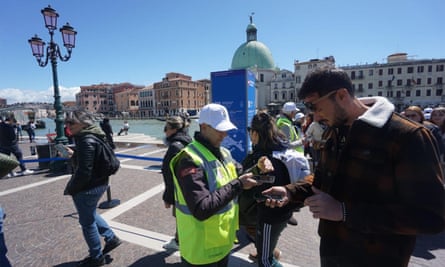
Venturini said the fee was mostly aimed at deterring Italian day-trippers. “For example, a lot of Italians come to the nearby beaches in summer and, on a rainy day, they overwhelm Venice. Yes, the majority are from Veneto and are exempt, but the fact they still have to go online to confirm this is a way to disincentivise them.”
Jana Plevova, from Prague, sympathised with the residents’ plight, but supported the fee. She was spending five nights in the city and so was exempt, as she already paid a nightly tourist tax, but said she would have no concerns about paying to enter for the day.
She said: “Prague is also suffering from over-tourism, so paying €5 is not that much for trying to preserve this beauty and architecture.”
Edel, from Ireland, said: “For me, €5 is nothing if you really want to come.” Her husband, John, was more sceptical. “It’ll be €5 this year, €10 next … Who knows what the price will be in a few years’ time? Venice will stop living off its good name and start being seen as a rip-off.”

‘Are we joking?’: Venice residents protest as city starts charging visitors to enter
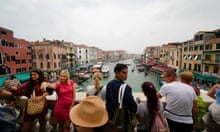
Venice access fee: what is it and how much does it cost?

Europe: Venice residents protest as city begins visitor charging scheme – as it happened
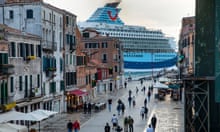
Venice mayor says he is brave like Marco Polo in charging day-trippers €5

Venice to limit tourist group size to 25 to protect historic city

Venice gondola capsizes after tourists refuse to sit down and stop taking selfies

Venice to trial €5 ticketing system for day visitors from 2024

I took my mum to Venice – it was instantly special
Most viewed.
Morning Rundown: Israel seizes key Rafah border crossing, what Trump's threatened jail time could look like, and why Miss USA is giving up her crown
Venice launches world first tourist entrance fee in bid to fight overcrowding
VENICE, Italy — Ancient and beautiful, this city is sometimes referred to as an open air museum — and now visitors to Venice will have to pay an entry fee after the tourist hub on Thursday became the first in the world to introduce a charging system for day-trippers.
In a bid to thin out the crowds that throng to see the canals, bridges and striking architecture during vacation season, day-trippers will have to pay 5 euros ($5.35) to enter the lagoon city on 29 peak days, mostly on weekends, as part of a trial phase until July 14.
Tourists who have booked at least one night at a hotel in the city will be exempt from the charge, as will residents, workers and students in the city. Visitors under age 14 will also be exempt. But like the day-trippers, they will also have to ensure they have registered online and received QR codes.
Those without smartphones will have to go to the city’s Santa Lucia train station to buy tickets.
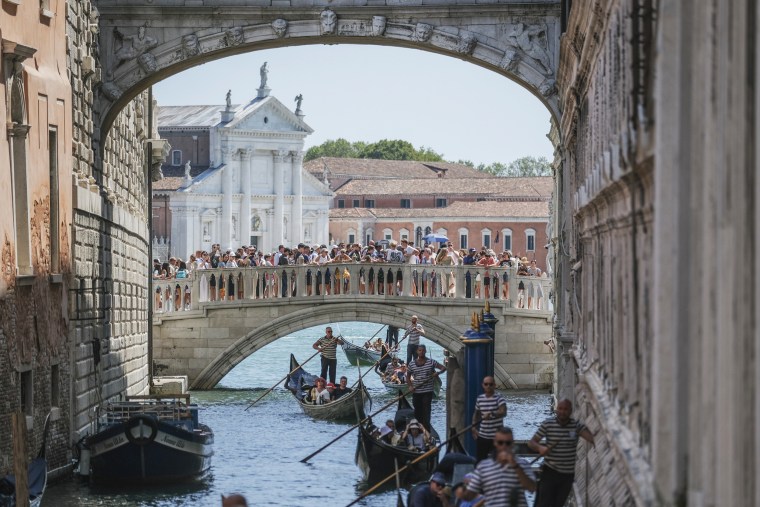
Among the thousands of people lining up at the station for a ticket Thursday was Donna Porter-Mutchler, a tourist from Tennessee, who told NBC News she thought the charge was “a wonderful idea.”
“Venice deserves to be taken care of,” she said. “I think it’s more than worth it. I come here often, and I’ll pay every time.”
While there will be no limits on the number of people who can register, officials hope the fee will put people off on days it applies.
“We are not looking to collect money, tax people or introduce a police state,” Simone Venturini, Venice’s tourism councilor, told NBC News. “We are being democratic about it, but the important message is: ‘Please, if you are a day-tripper, choose another day.’”
While there are no turnstiles at the city’s entrance points to make sure people have passes, inspectors will make random checks and issue fines of 50 to 300 euros to anyone who has failed to register.
Prominent signs across the city and a TV and newspaper advertising campaign have been launched in Italy and some other countries to let people know about it. And with the help of artificial intelligence , Mayor Luigi Brugnaro has also recorded a video message in several languages to inform tourists about the charge.
Officials in the city estimate an average of 50,000 people a day visit Venice, an influx that almost matches the resident population, some of whom are unhappy about the new charge.
“Venice has turned into Disneyland, where tourists are catered more than residents, and charging $5 is not going to stop anyone,” Federica Toninello of the Social Assembly for Housing and the Solidarity Network for Housing in Venice said Thursday. “It’s just propaganda.”
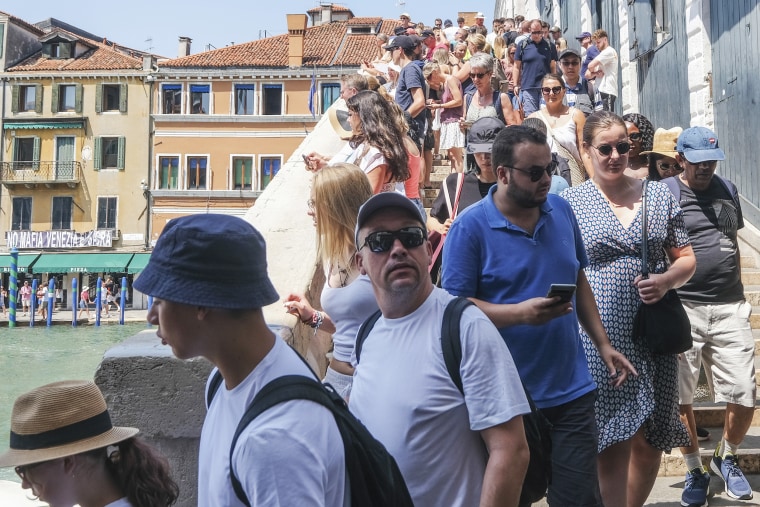
Others, like tourist guide Luisella Romeo, said they were concerned about the use of personal data collected by the new system. “That’s an invasion of privacy. Those details will remain in the system for five years and could be given to third parties, public and private,” she said.
But officials in the city, which narrowly escaped being placed on UNESCO’s “World Heritage in Danger” list last year, in part because the United Nations body decided that it was not addressing concerns that its delicate ecosystem risked being overwhelmed by mass tourism, have insisted that something needed to be done.
Three years ago, large cruise ships were banned from sailing into the Venetian lagoon , and the city has also announced limits on the sizes of tourist groups.
While the charge in Venice is still in its experimental stage, other popular Italian tourism destinations, like Lake Como, which has struggled with overcrowding for years, are watching closely.
Only time will tell whether it ends up dead in the water.
Claudio Lavanga is Rome-based foreign correspondent for NBC News.
Venice entry fee launches: Day-trippers now have to pay to visit the Italian city at peak times
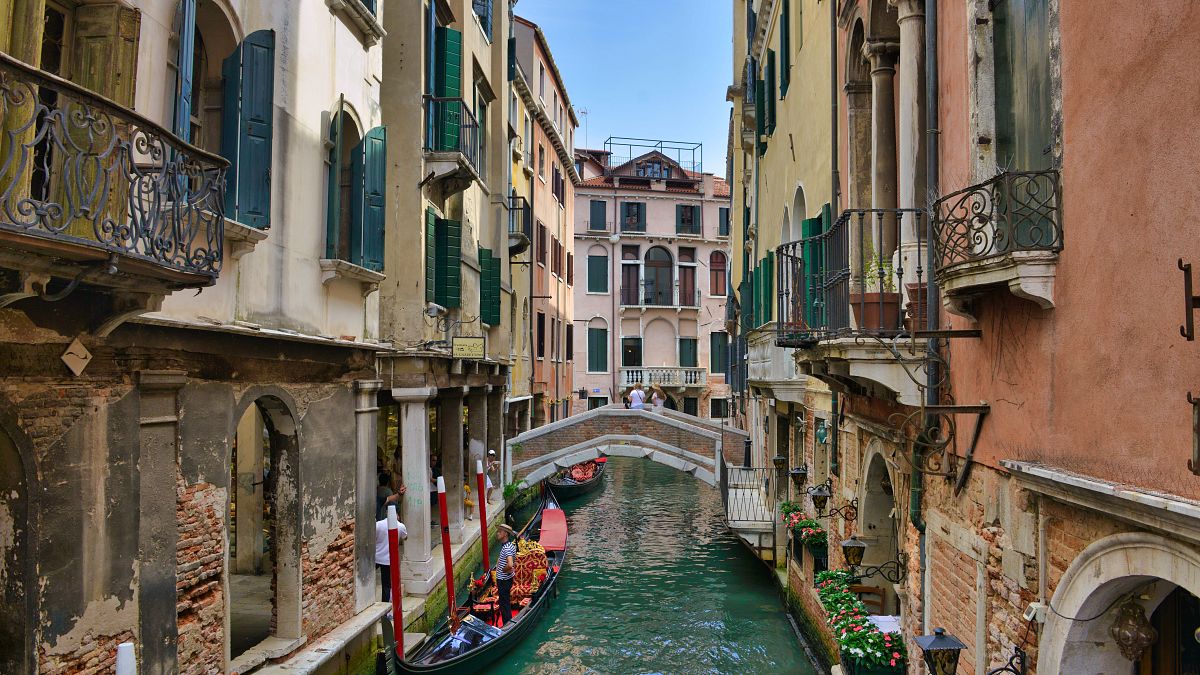
Venice has rolled out a tourism tax to try to stop overcowding on peak weekends.
Last November, Venice authorities unveiled a pilot program for their long-mooted plan to charge day-trippers to visit the city.
Today (25 April) the pilot programme has finally come into force.
Signs advising arriving visitors of the new €5 fee for a test phase of 29 days through July have been erected outside the main train station and other points of arrival.
Some 200 stewards have been trained to politely walk anyone unaware of the fee through the process of downloading a QR code. A kiosk has been set up for those not equipped with a smartphone. Once past designated entry ports, officials will carry out random checks for QR codes that show the day-tripper tax has been paid or that the bearer is exempt.
Transgressors face fines of between €50 and €300. The requirement applies only for people arriving between 8.30 am and 4 pm. Outside of those hours, access is free.
Tourists can book tickets and get their QR code via the online payment platform , which went live on 16 January.
The entry fee aims to reduce crowds, encourage longer visits and improve quality of life for residents.
Here's everything you need to know about what you have to pay and why.
Why is Venice introducing a tourist tax?
The rollout of the tourist tax comes after Venice narrowly escaped being placed on UNESCO's danger list last year because of the damage from overtourism on its delicate ecosystem.
Member states cited the proposed new entry fee in deciding to spare Venice from the list.
Venice mayor Luigi Brugnaro said that the fee is not an attempt to bring in extra revenue. Rather, it is a 'first-of-its-kind experiment' to regulate tourist flows in one of the world’s most-visited places .
The aim of the charge is to incentivise visitors to avoid high-traffic periods and come on other days.
“Our attempt is to make a more liveable city,” he said at a news conference outlining the pilot program.
The city is strained when the number of day-trippers reaches 30,000 to 40,000, according to the city’s top tourism official, Simone Venturini. Its narrow alleyways are clogged with people and water taxis packed, making it difficult for residents to go about their business.
“We need to find a new balance between the tourists and residents,’’ he said. “We need to safeguard the spaces of the residents, of course, and we need to discourage the arrival of day-trippers on some particular days.”
- Exclusive: Venice u-turns on overtourism tax this summer despite record visitor numbers
- We’ve travelled too cheap for too long: Are tourism taxes a good idea?
When will visitors have to pay to visit Venice?
Starting on 25 April 2024, visitors will have to pay a fee of €5 to enter the fragile lagoon city.
The charge will be in place on peak weekends and other days between April and mid-July - 29 days in total.
The day-tripper fee will be in force during peak hours from 8.30 am until 4 pm, meaning visitors who come into Venice for dinner or a concert won’t have to pay.
Who has to book a ticket to visit Venice?
A host of exemptions apply to the entry fee system.
Those who don't have to pay the day-tripper tourist tax include residents, Venetian-born visitors, students and workers, as well as tourists who have hotel or other lodging reservations.
How can I book my ticket for Venice?
Visitors can 'reserve' their day in Venice on a dedicated platform .
Day trippers pay €5 and get a QR code that will then be checked at spot controls at seven access points around the city, including at the main train station.
Visitors with hotel reservations enter their hotel information and also get a QR code to show. They don't have to pay, however, since their hotel bill will already include a Venice lodging fee.
How is Venice making tourism more sustainable?
After COVID-19 lockdowns devastated its tourism industry, Venice has been trying to rethink its relationship with visitors in a more sustainable way while also seeking to incentivise its residents to stay put.
The city has been forced to take action in response to the steady exodus of Venetians to the mainland.
- Santiago de Compostela wants to introduce tourist tax to prevent ‘uncontrolled tourism’
- New tourist tax and higher transport costs: How Japan is planning to combat overtourism
After pressure from UNESCO and environmentalists, authorities have finally banned big cruise ships from sailing past St Mark’s Square and through the Giudecca canal.
Venice has been pointing to longer-term tourists as key to its survival since they tend to spend more.
Brugnaro said in no way does the new day-tripper contribution discourage tourism overall, but just seeks to manage it better.
He acknowledged the visitor program will probably have glitches and will need to be amended. But he said that after years of study and talk, it was time to roll it out.
Not all residents , however, are persuaded of the efficacy of the new system in dissuading mass tourism, and say more attention needs to be paid to boosting the resident population and services they need.
You might also like
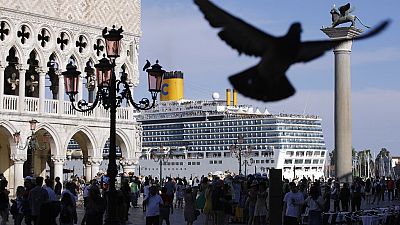
Italy, Croatia: The cities set to see an influx of cruise ships
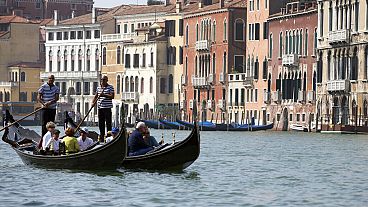
Venice puts further limits on tourists to protect the city

Only one of the world’s cleanest airports is in Europe
Venice residents protest as city begins tourist entry charge
- Medium Text
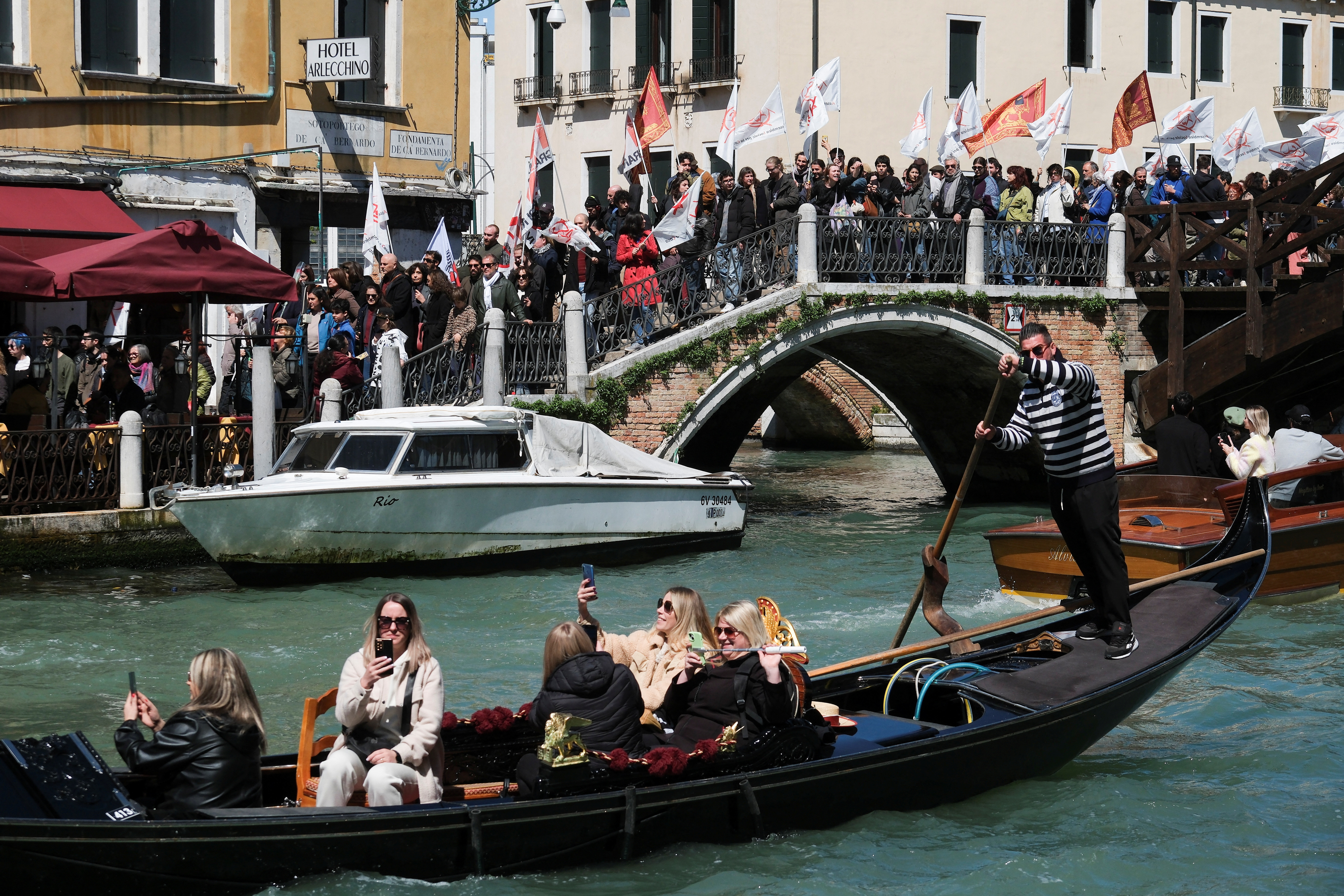
Sign up here.
Writing by Crispian Balmer and Gavin Jones; Editing by Peter Graff and Sharon Singleton
Our Standards: The Thomson Reuters Trust Principles. New Tab , opens new tab

World Chevron
How to vote for your favourite in eurovision 2024.
The world's biggest live music event, Eurovision Song Contest, will take place in Sweden in the second week of May with 37 participating countries.
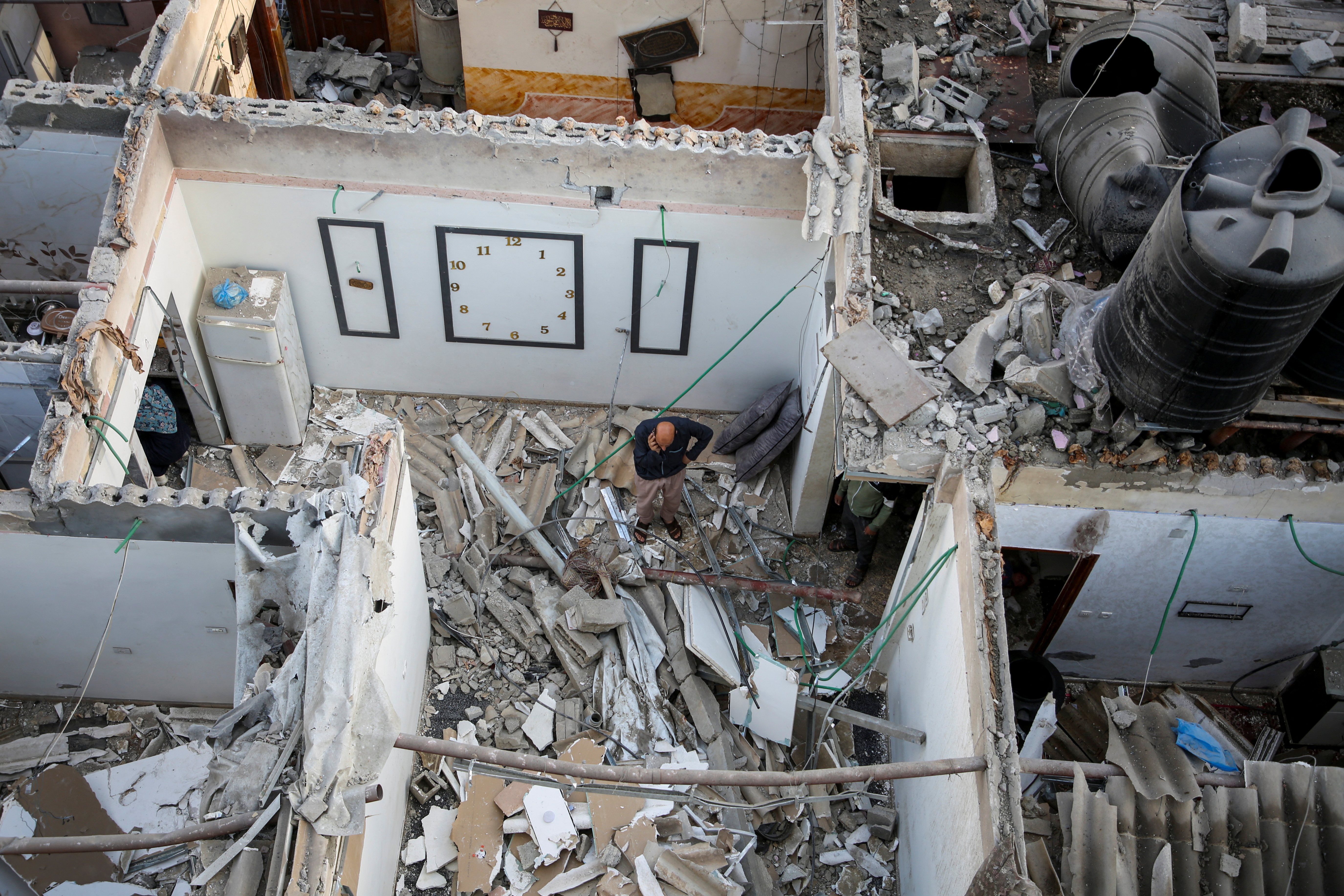

IMAGES
VIDEO
COMMENTS
In Venice, like many popular tourist destinations, it's easy to fall into the trap of dining at a less-than-stellar restaurant. Here's how to spot a tourist trap restaurant: Menus with pictures : If a restaurant has menus in multiple languages, and includes pictures, it's a clear sign that it caters primarily to tourists.
Tourist Trap: Coffee in St. Mark's Square. The whole idea behind this post came from the most recent €100 bill for four coffees in St. Mark's Square, so I certainly can't leave you without a tip to avoid this tourist trap! St. Mark's (San Marco in Italian) is Venice's most beautiful, and actually only, piazza.
See Vegas' new venue lighting up the skyline. So-called "tourist trap" restaurants in Venice have long been a bone of contention for visitors to the Italian city. But in recent months there ...
For Italian standards, Venice is an expensive city, and so is the food, even in the supermarkets. It is by no means possible to offer a full menu with fresh ingredients at 10 or 12 euros. Masks costing less than 20 euros can't be made in Venice. Chances are you're looking at made in China masks, a threat to your Health.
Travelling in Italy offers a rich tapestry of cultural experiences, and Venice stands out as a crown jewel. However, like many popular destinations, it's not immune to tourist traps. Recognising a trap often comes down to a few key indicators: 1. Over-promotion: If something is overly advertised, especially in several languages and with high ...
Skip the tourist traps of St. Mark's Square in Venice and go to the authentic cafes in the Dorsoduro university district instead. Stefano Mazzola/Getty Images. St. Mark's Square (pictured) is the epitome of Venetian splendor. The Byzantine architecture of Basilica impresses with golden grandeur, the silhouette of the 16th-century Campanile is ...
Trattoria Alla Rampa. Castello, 1135, 30122 Venezia VE, Italy (Via Garibaldi) Telephone: +39 041 528 5365. Lunch only, closed on Sunday. Located in a working-class neighbourhood, Trattoria Alla Rampa is a popular lunch spot for the residents who live in this neighborhood. Their wallet-friendly "worker's menu", which consists of pasta ...
If your family is planning on traveling to Venice, Italy, beware that the city can be filled with expensive tourist traps. However, this shouldn't deter you from traveling to this one-of-a-kind destination. You can absolutely still see the beauty and culture of Venice. This article shows you how thanks to a few tips from a local.
You should definitely not fall for these tourist traps in Venice, because apart from the inferior quality of these goods, you can expect a heavy fine if you are caught buying them. Whether you stay in Venice for a week or just a day trip, you can avoid the tourist and budget traps by going to a quieter part of the city. ...
Tourist trap 'Restaurant' - Watch out for hidden costs ... Tourist traps in Venice are similar to the ones in every other typical tourist city concerning number and nature. However, you should watch out for hidden costs while visiting a restaurant. Although a fee-for-place setting (Coperto) is usual in many Italian restaurants, you will ...
Venice is a tourist hot spot, and this year the Italian city is expected to get more visitors than ever before. ... While people may debate whether Venice, Italy, is a tourist trap, one thing's ...
The best way to experience Venice is to go during the low season, roughly from November through March. I went in November 2023 and found fewer tourists and better weather than in the busy summer months. There's also a lot more to Venice than such popular spots as Piazza San Marco and the Rialto Bridge. The city is shaped like a fish, with the ...
Absolutely. At the beginning of the last century, the German novelist, Thomas Mann, called Venice "Part fairy tale, part tourist trap". There are certainly elements of both but even now it's not so difficult to escape from the crowds. Wander a couple of streets away from St Mark's and you'll find yourself in a different Venice entirely.
Finally, don't miss Venice's famous Cicchetti (Venetian-style tapas). ... Signs That Restaurant Might Be a Tourist Trap The site rating is in the window. Travel site-tested, tourist approved ...
During your holiday, you must at least once sit in one of the fish restaurants in Venice! Already from the shape the city looks like a fish. If you arrive by plane at Marco Polo airport, you may be able to see this characteristic marine silhouette. Fish is also a fundamental food of Venetian cuisine: it is caught both in the lagoon and in the ...
So-called "tourist trap" restaurants in Venice have long been a bone of contention for visitors to the Italian city. Posted 2018-01-31T12:00:15+00:00 - Updated 2018-01-30T11:02:49+00:00
Venice is a tourist trap. Look for places off the beaten track and trust your gut, not TripAdvisor. It's pretty bad by Italy standards, but I always thought it was more about poor value than genuinely bad food. Go to where the locals eat, don't bother checking tripadvisor/google.
Can Venice turn the tide on 'tourist trap' restaurants? With large crowds expect to descend on the city from April 28 to May 1, Mayor Luigi Brugnaro says "urgent measures to guarantee public ...
It is not a tourist trap where one feels like locals only see them there to spend money. Tourists: 5.5 Million Tourists Annually (2019) According to statistica.com, Venice is the eleventh most popular tourist destination in Europe (discounting Antalya and Istanbul in Turkey). It has nearly as many tourists as major cities like Madrid, and ...
B. Avoid the "free-tours" to Murano. This helpful piece is how spot a common tourist trap in Venice centered around Murano glass. Salespersons, hired by glass factories, tempt tourists with a "free-tour" of Murano. It sounds harmless at first, but the "free-tour" will be brief, limited to one place, and end with pressure to purchase ...
Around 89% of Americans say they've visited a tourist trap at least two times in the past two years, according to a recent survey by PhotoAiD, a tech company that develops apps for taking ...
The Italian city of Venice has announced new limits on the size of tourist groups - the latest move to reduce the pressure of mass tourism on the famed canal city. Starting in June, groups will be ...
N ot all tourist traps are created equal. Sometimes you can have a blast visiting an extra-touristy place, too. While hot spots like the Amalfi Coast, Venice, or Toledo may be filled with tourist ...
In 1951, Centro Storico di Venezia—the historic center of Venice, Italy—hosted a resident population of almost 175,000. Today, that number is less than 50,000. Today, that number is less than ...
Tourists visiting Venice on peak days need to buy a ticket online or at booths to enter the city. Those who fail to register risk being stopped by a ticket inspector and charged between 50 and 300 ...
Venice to limit tourist group size to 25 to protect historic city. 31 Dec 2023. Venice gondola capsizes after tourists refuse to sit down and stop taking selfies. 6 Dec 2023.
CNBC
Venice launches world first tourist entrance fee in bid to fight overcrowding Day-trippers will have to pay 5 euros ($5.35) to enter the lagoon city on 29 peak days, mostly on weekends, until July ...
Venice mayor Luigi Brugnaro said that the fee is not an attempt to bring in extra revenue. Rather, it is a 'first-of-its-kind experiment' to regulate tourist flows in one of the world's most ...
Venice became the world's first city to introduce a payment system for tourists on Thursday in an effort to thin the crowds that throng its canals, but the fee drew protests from some residents ...